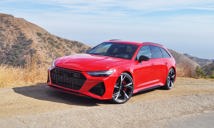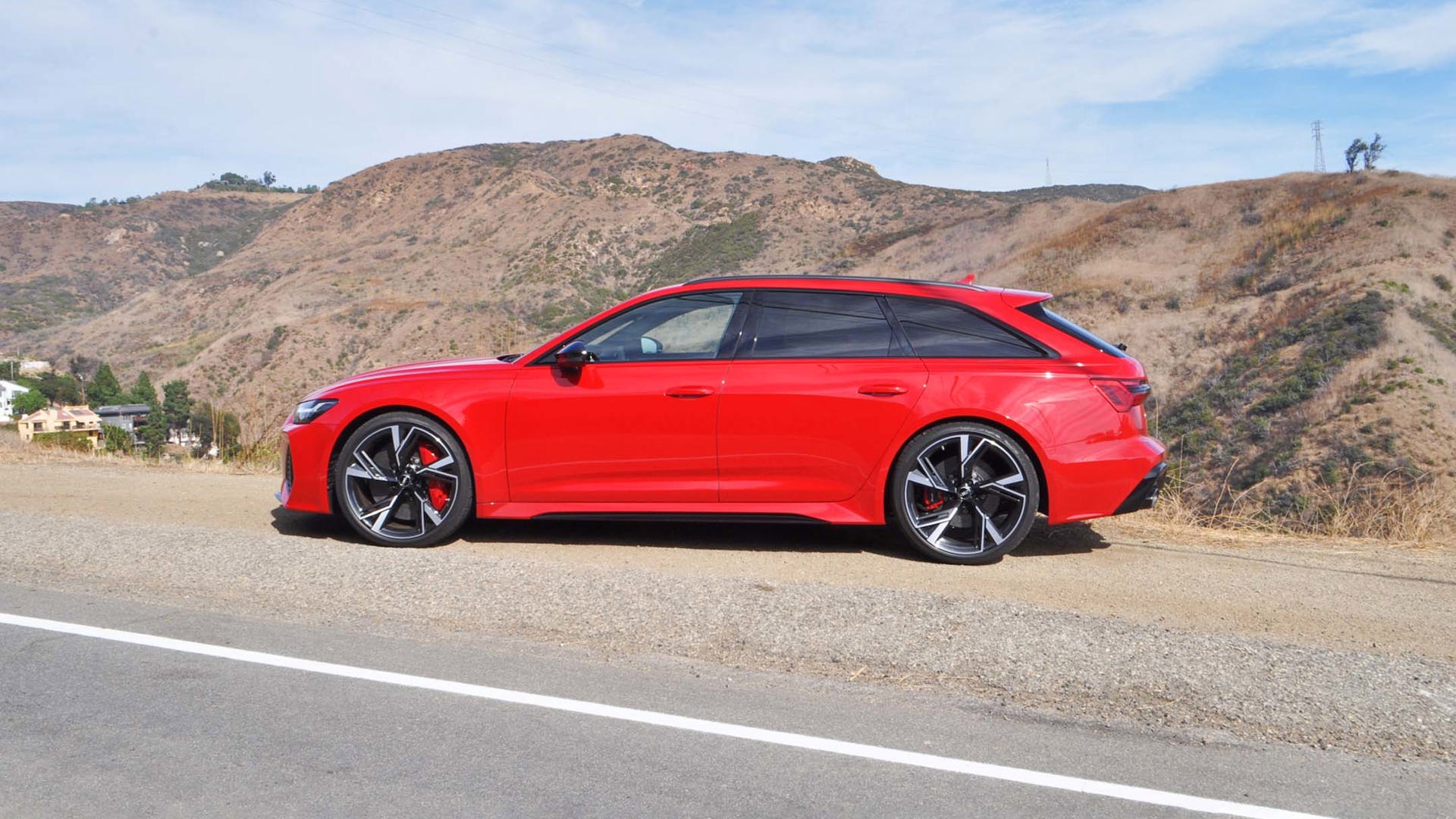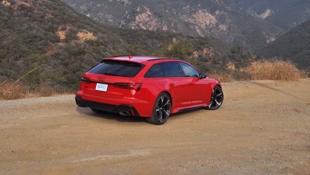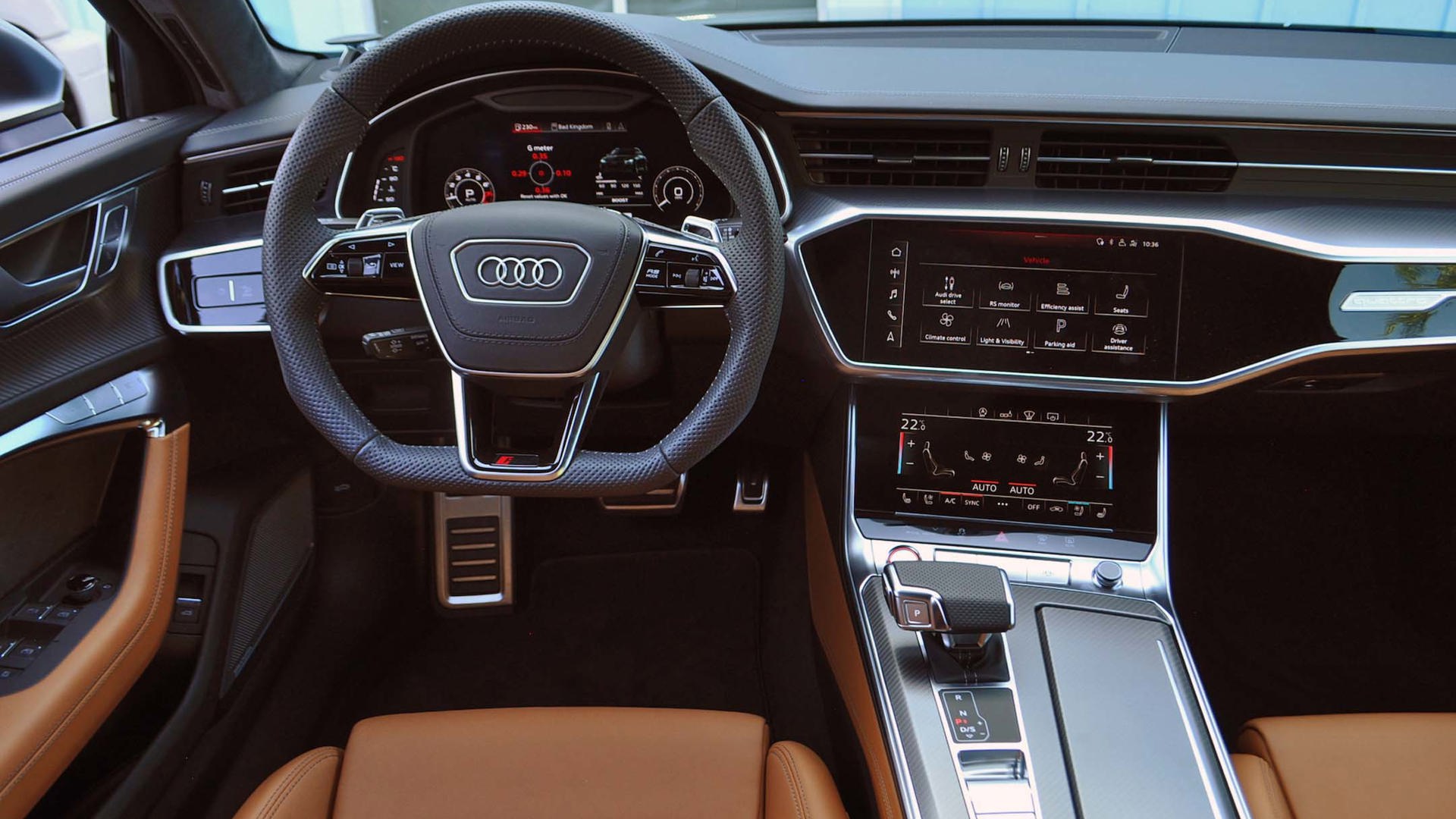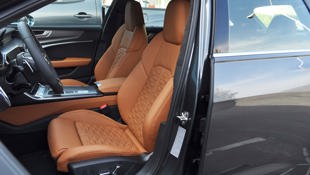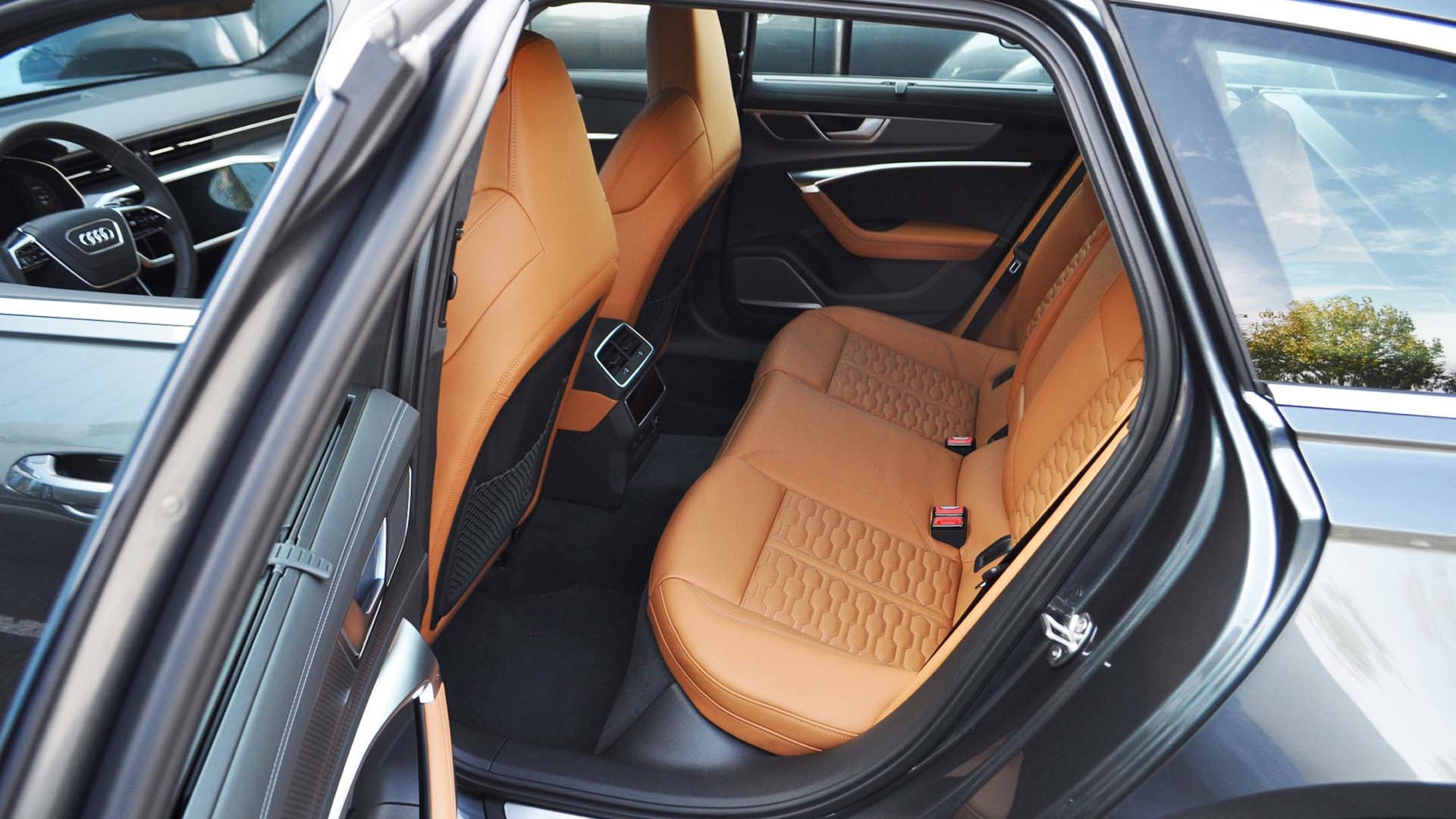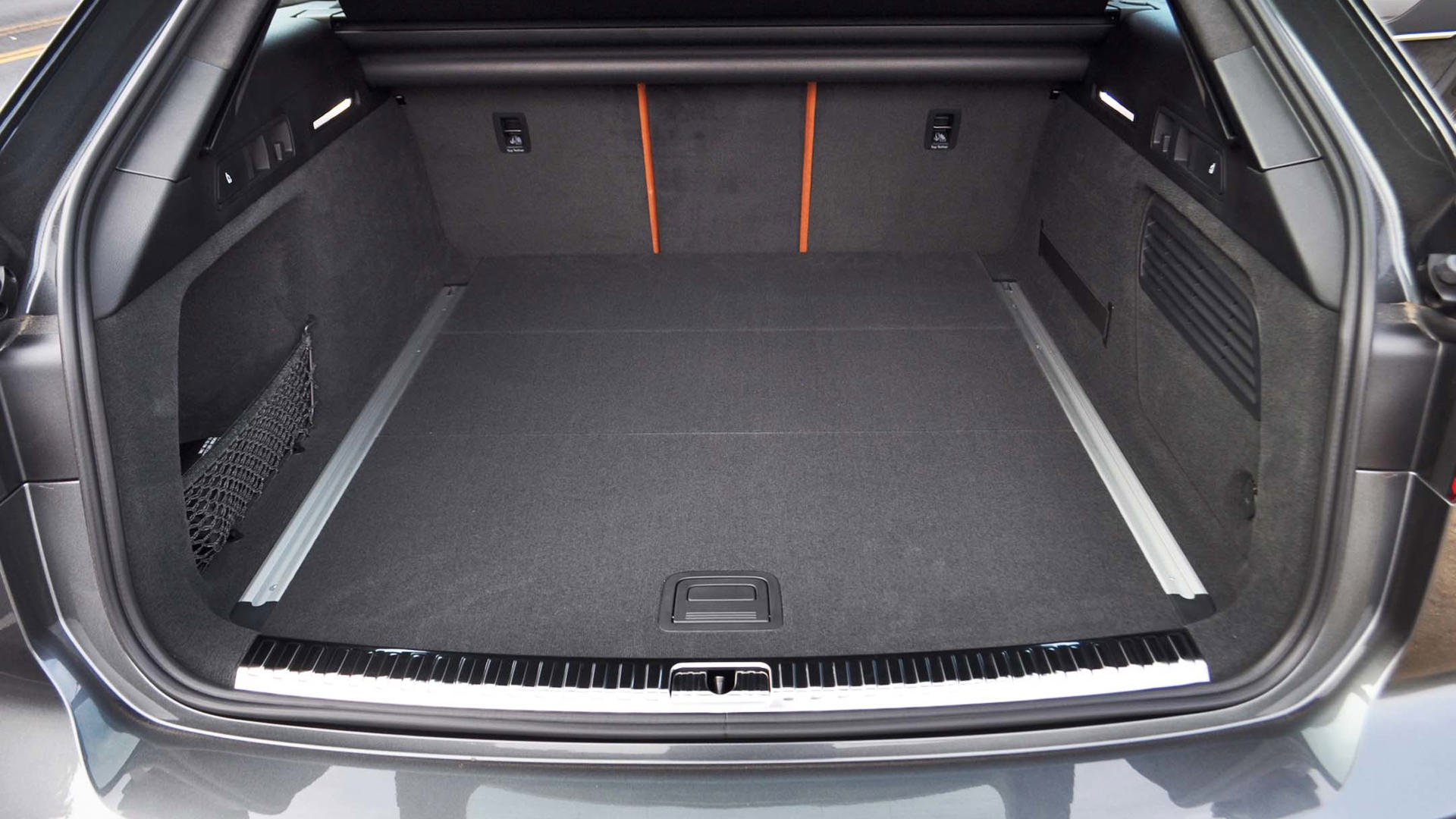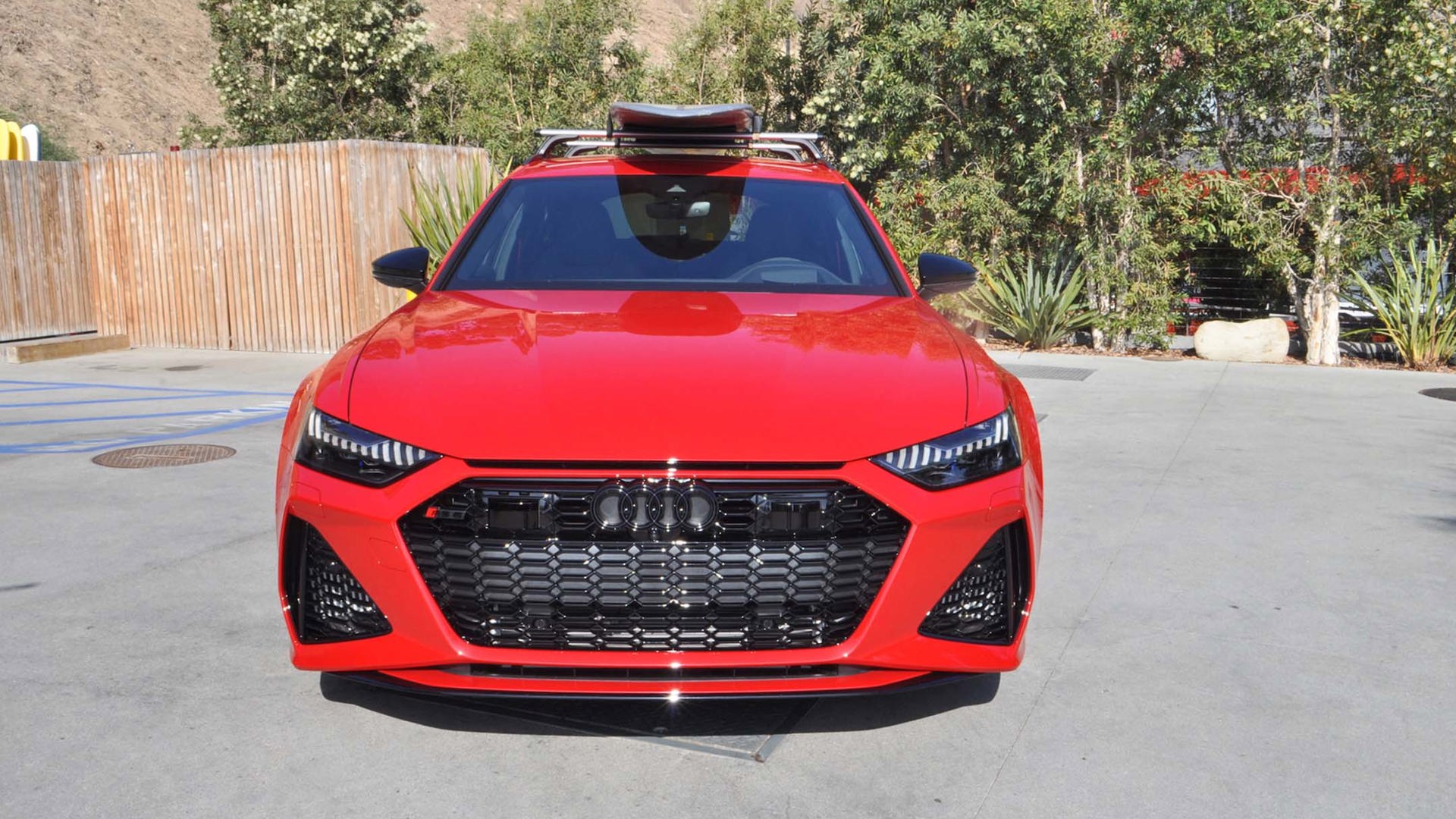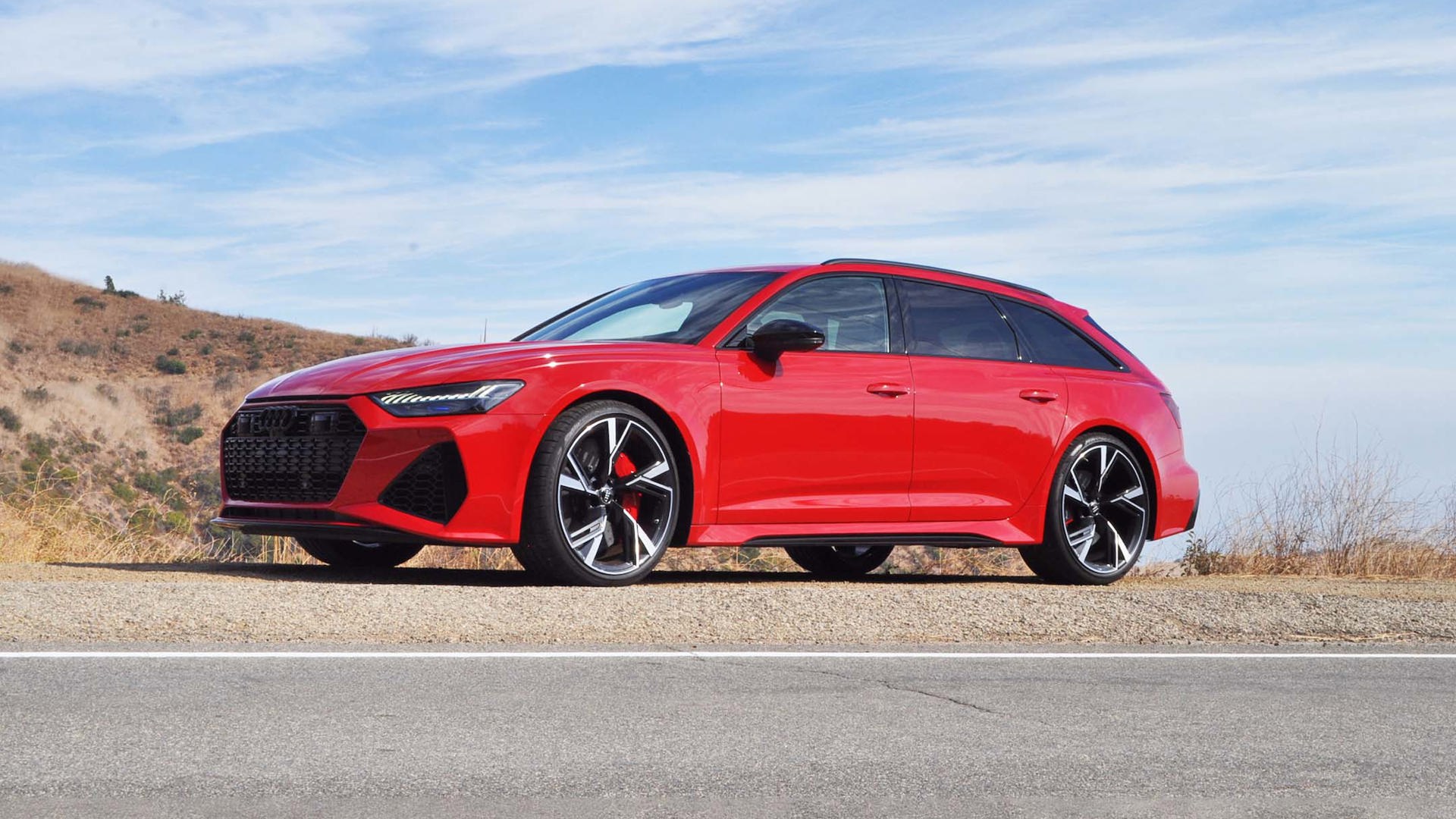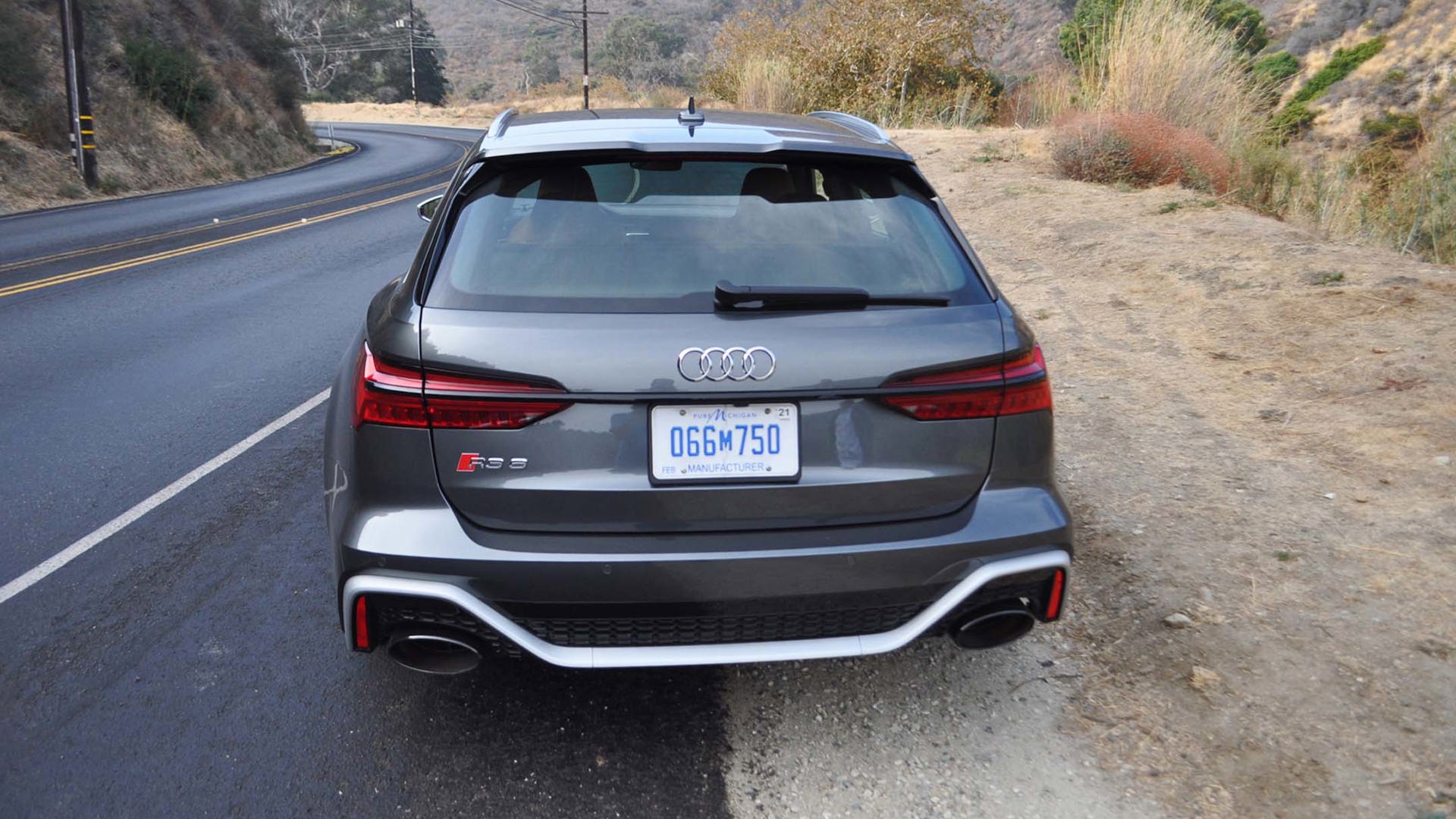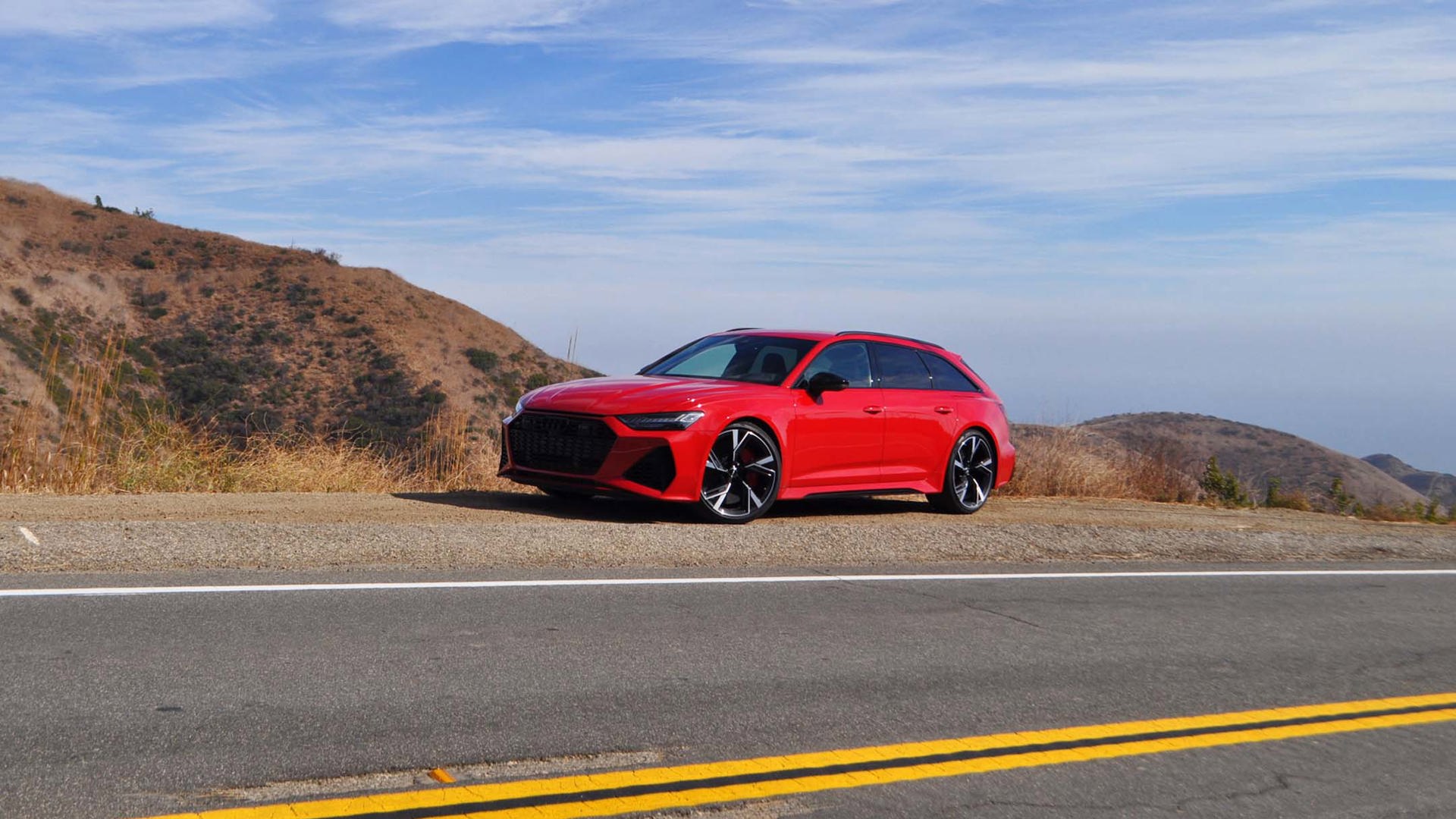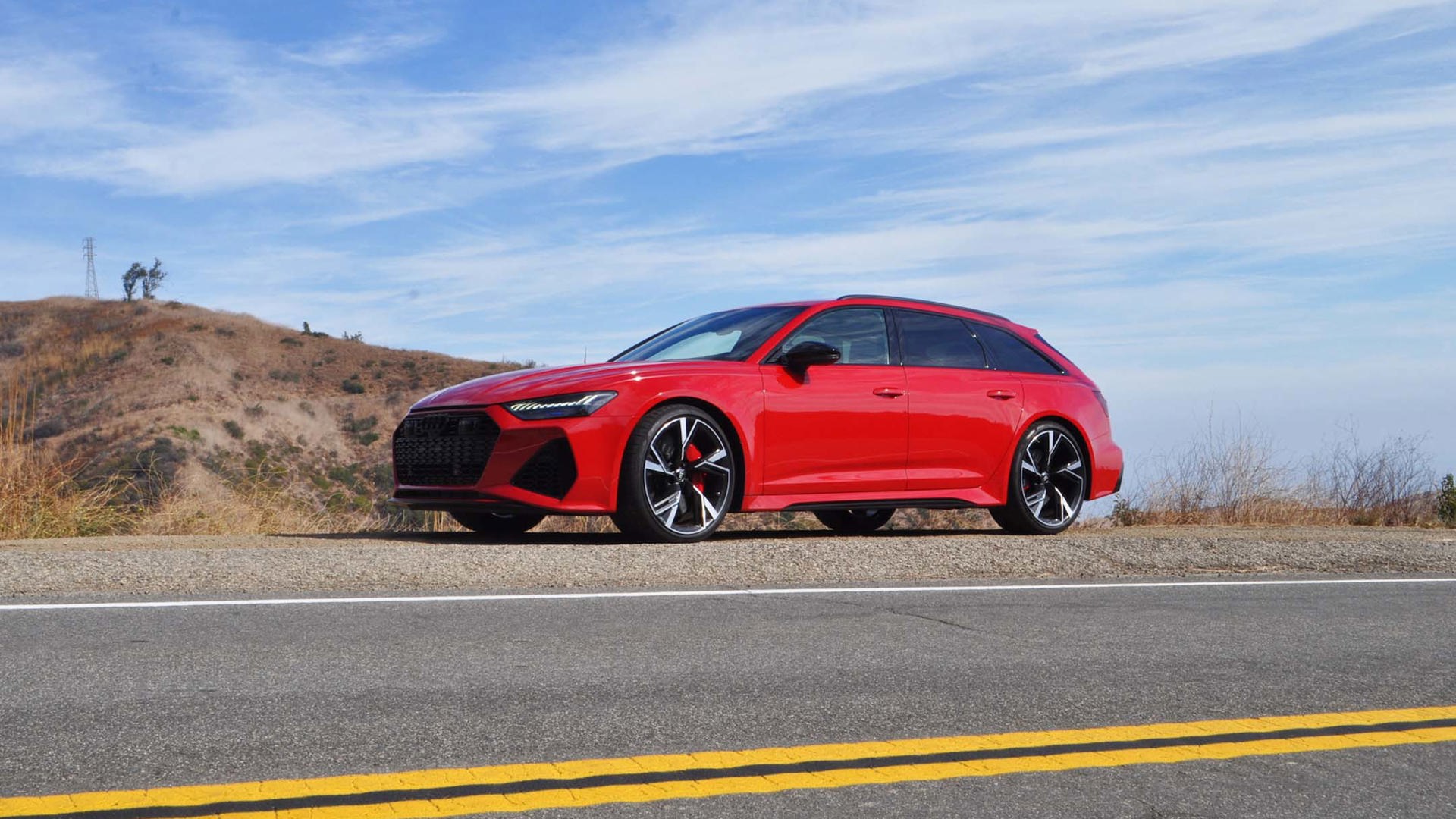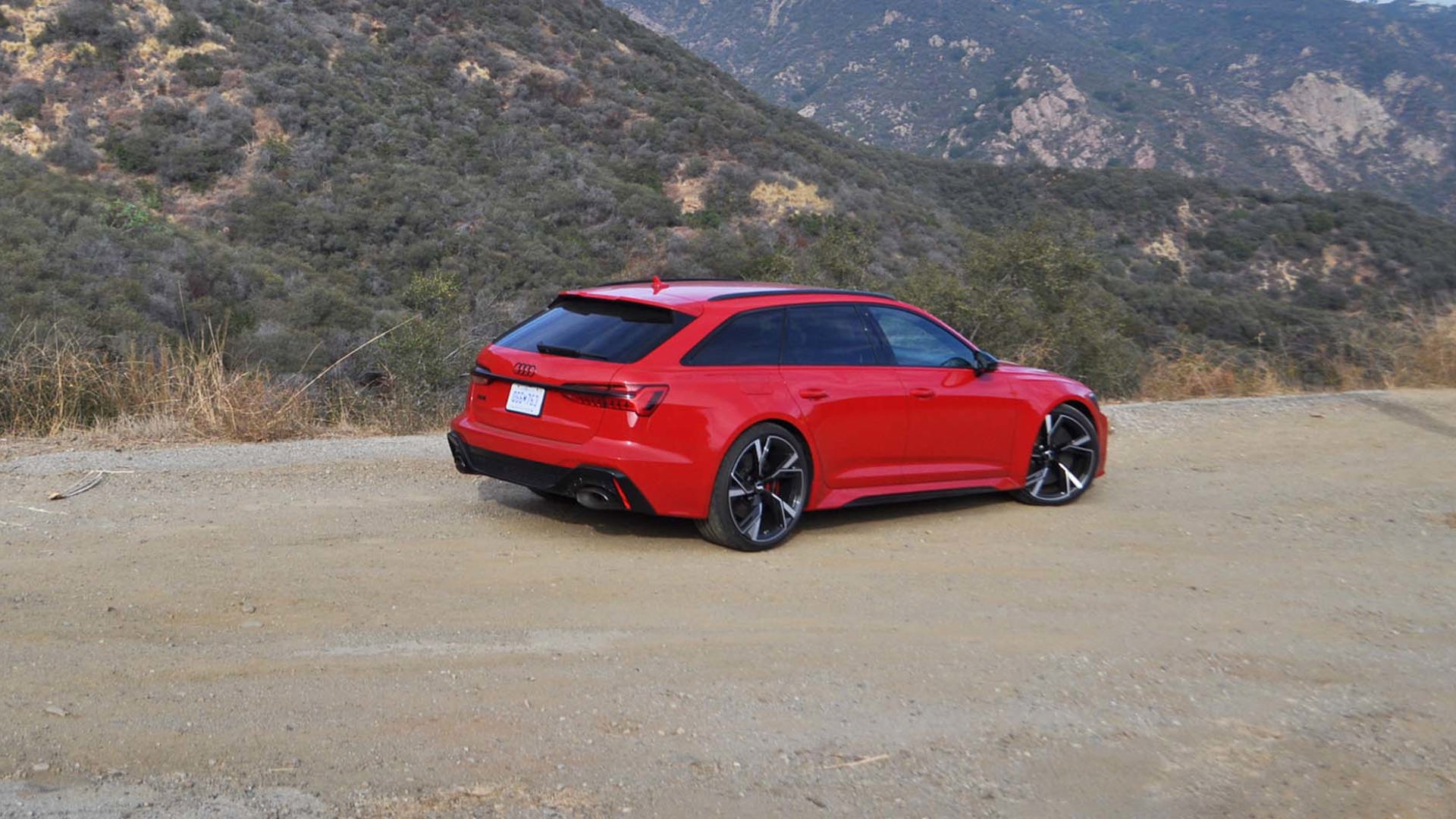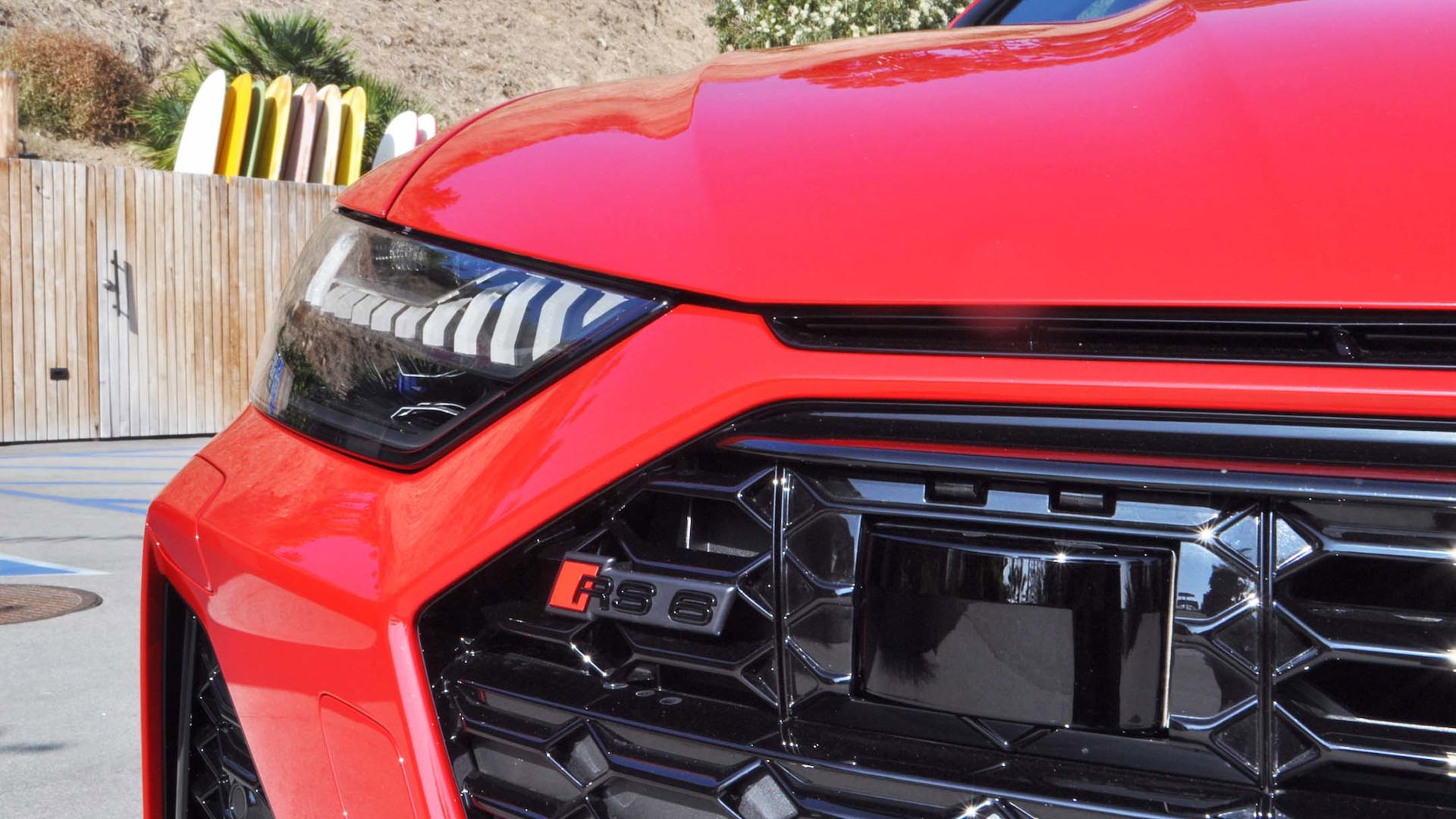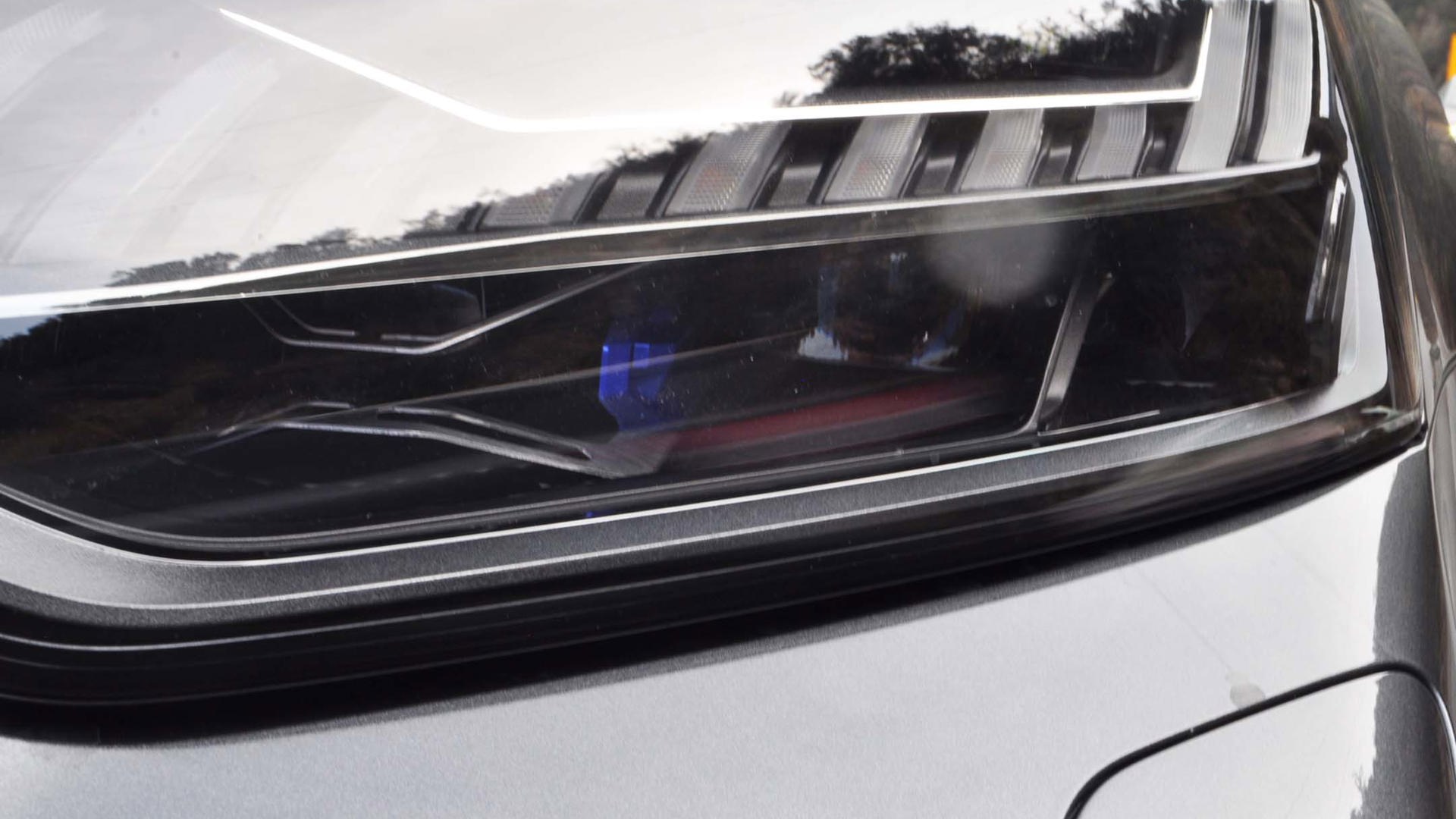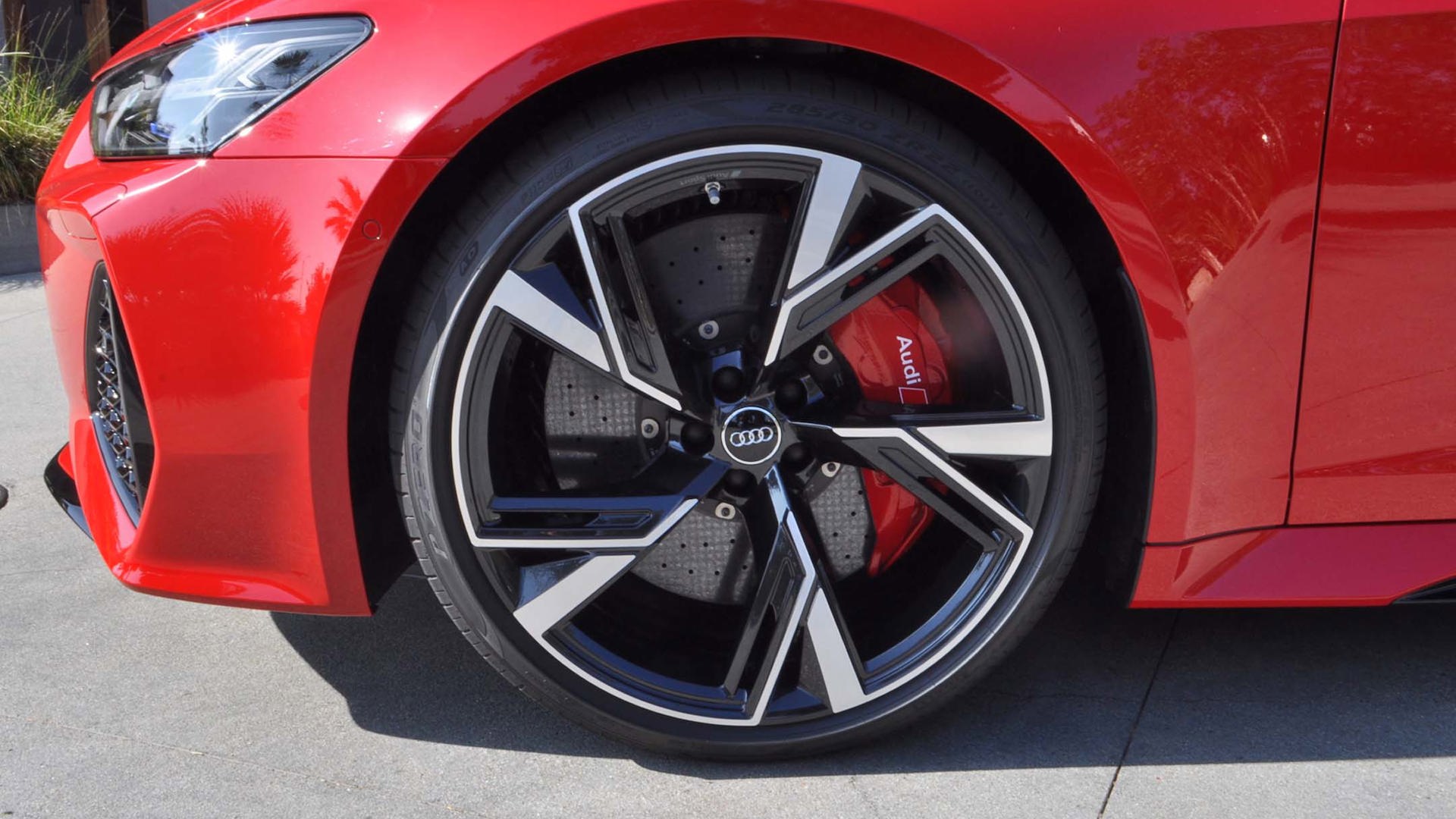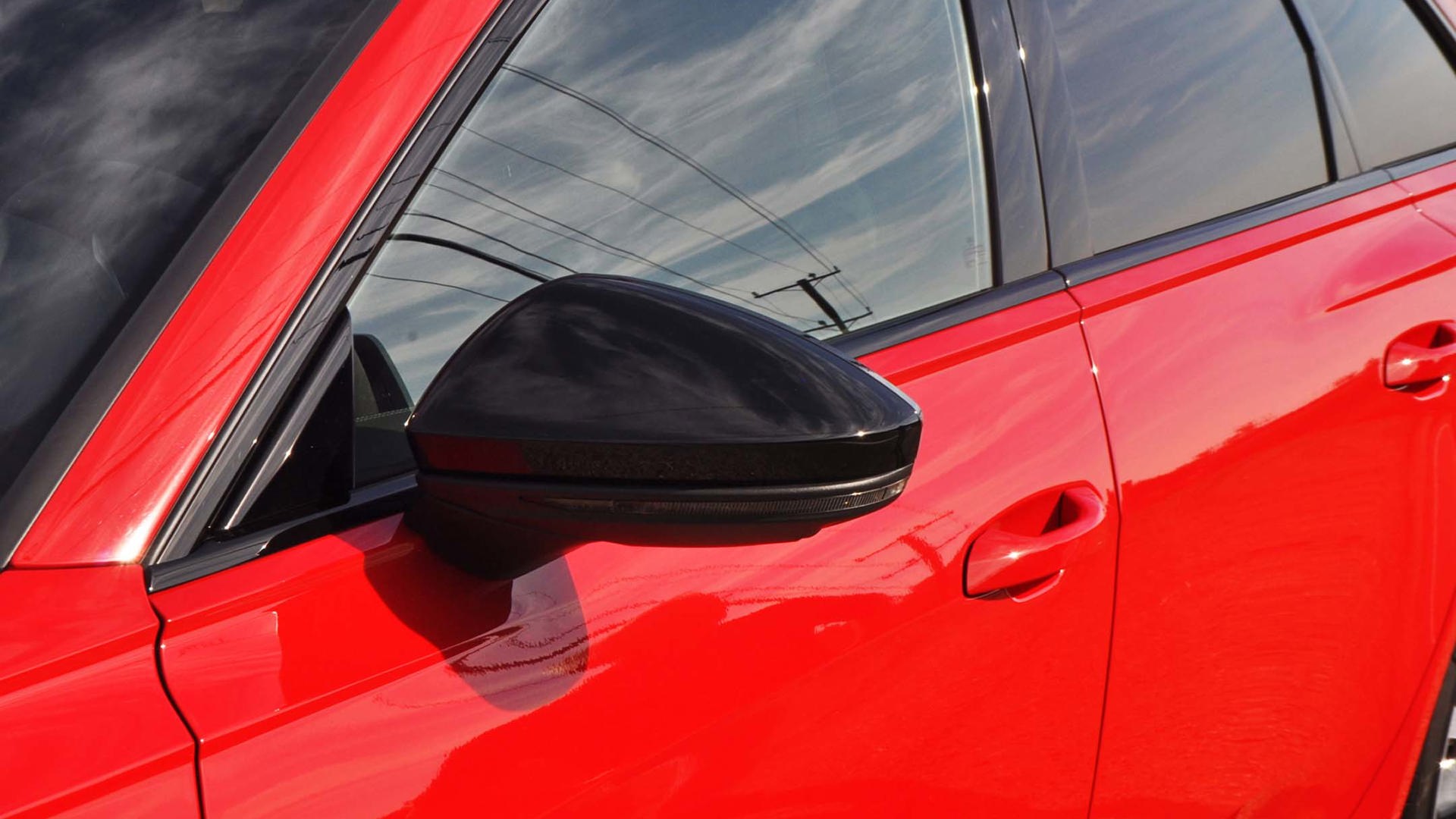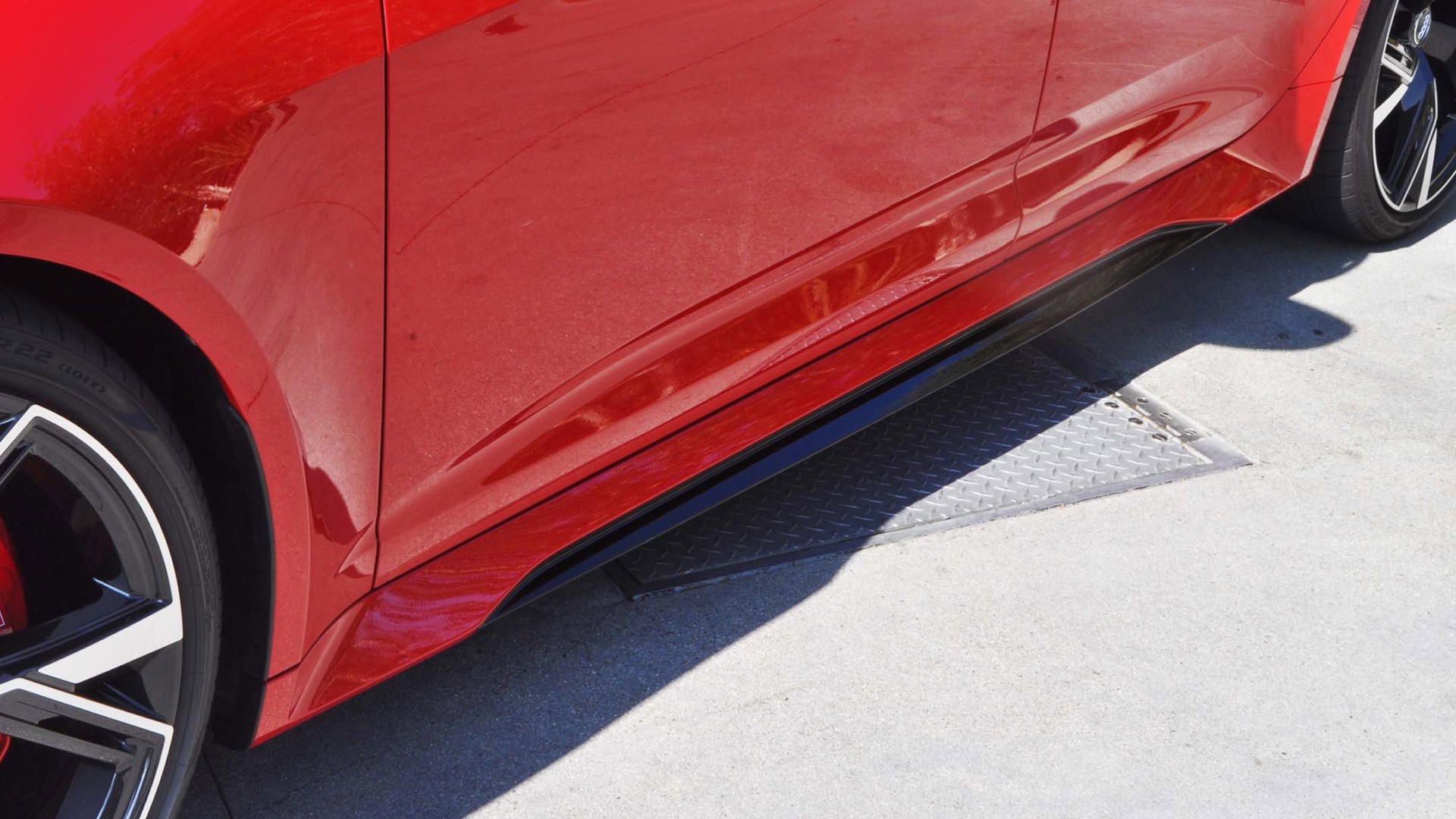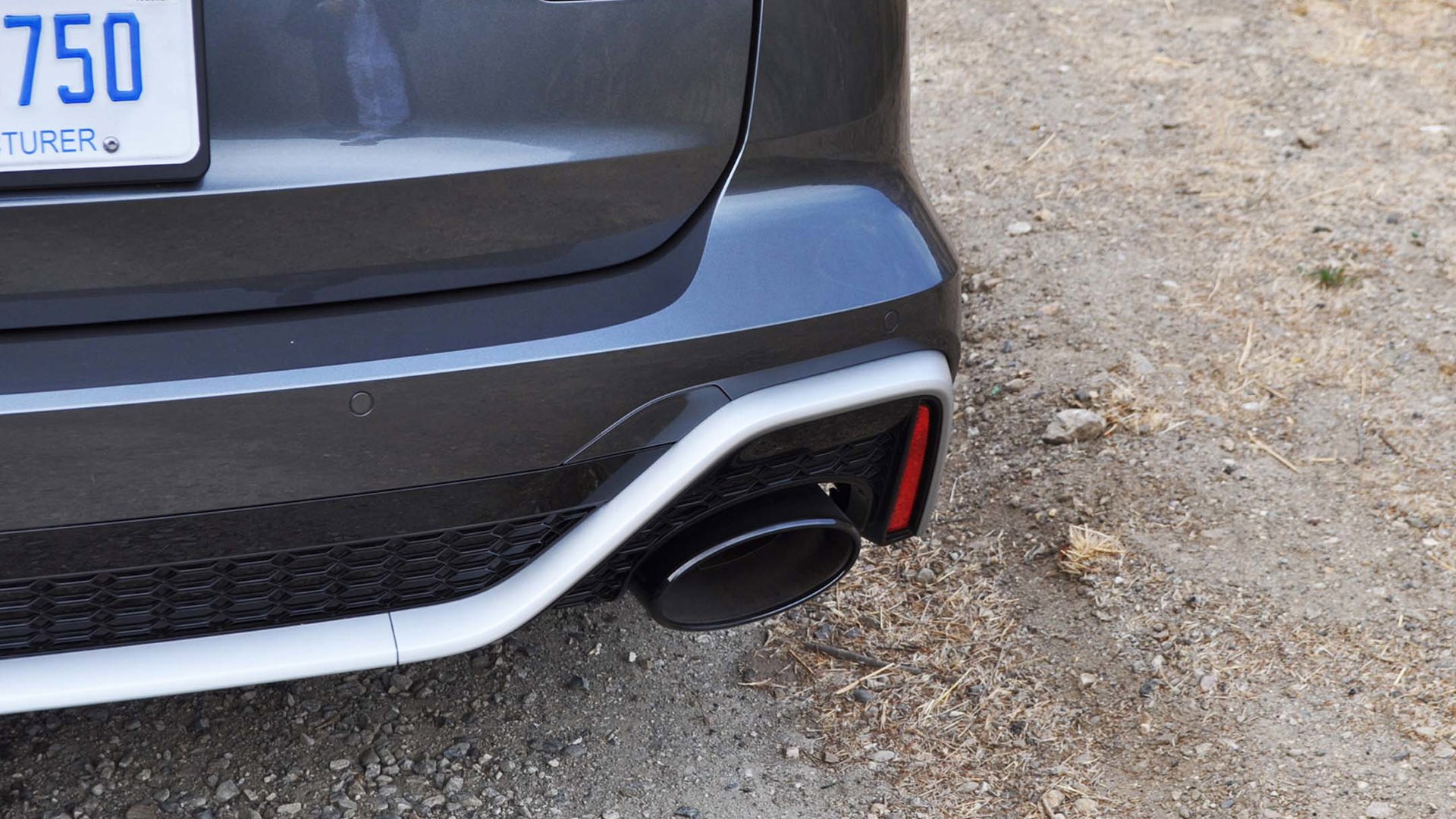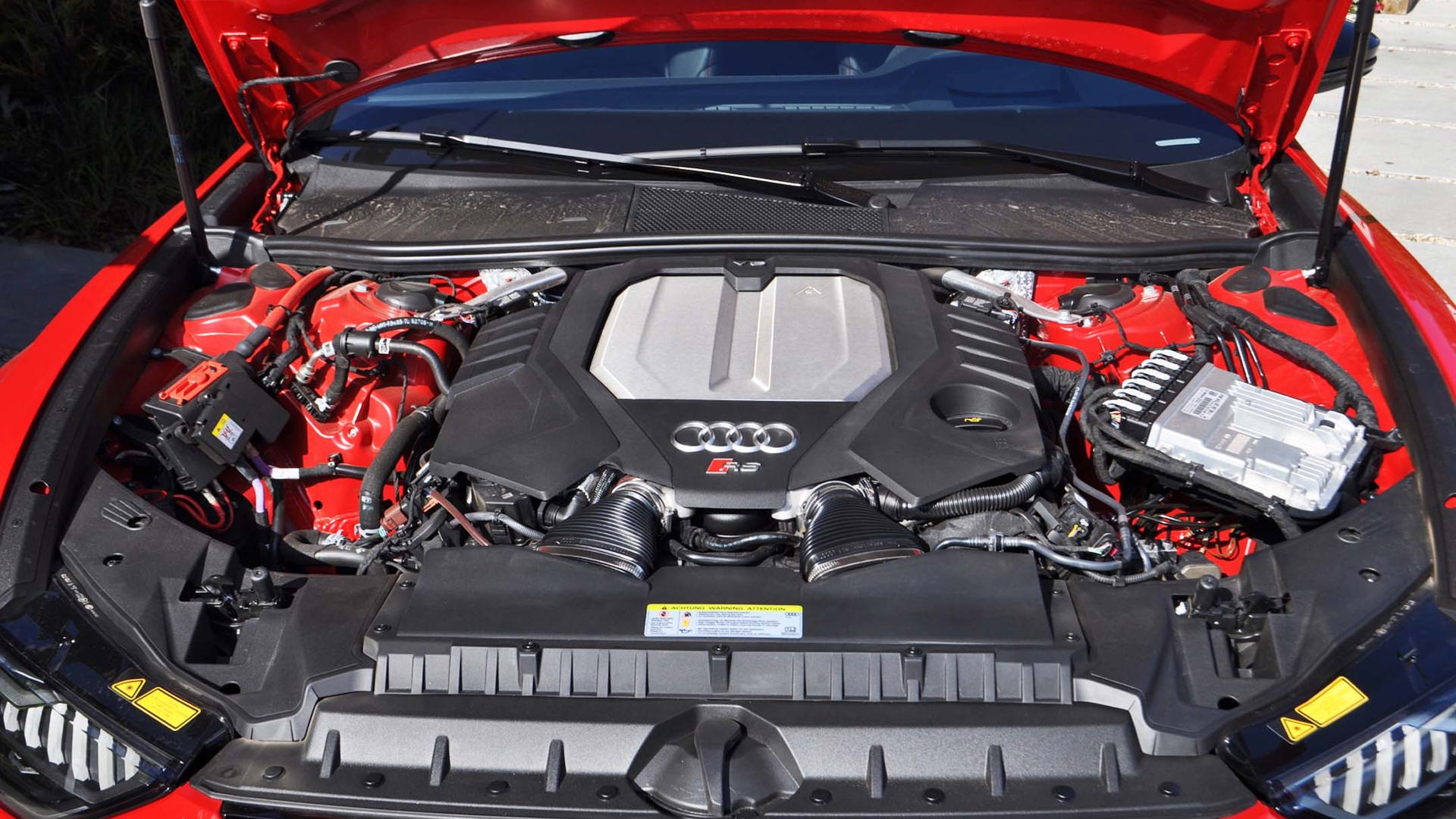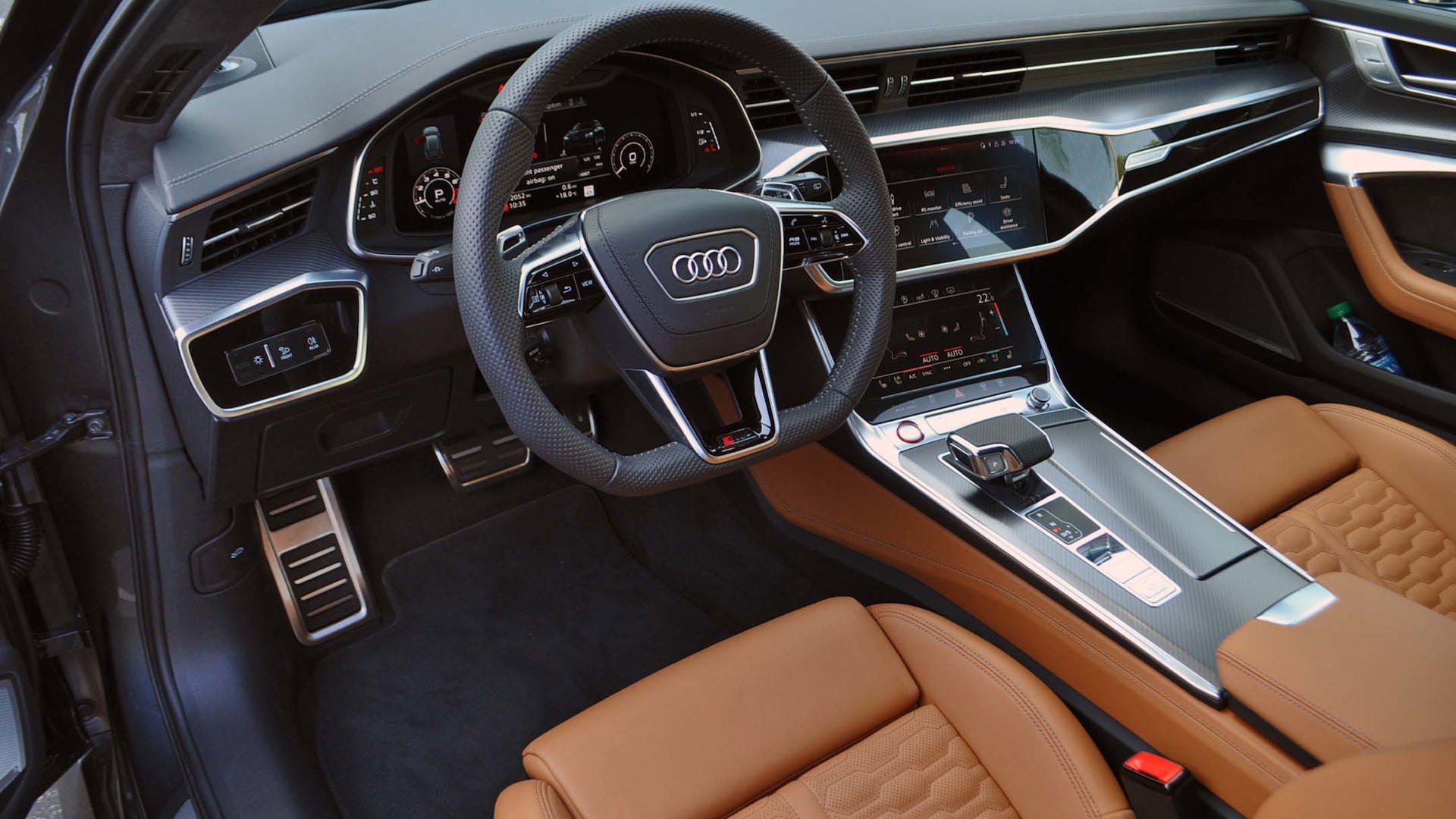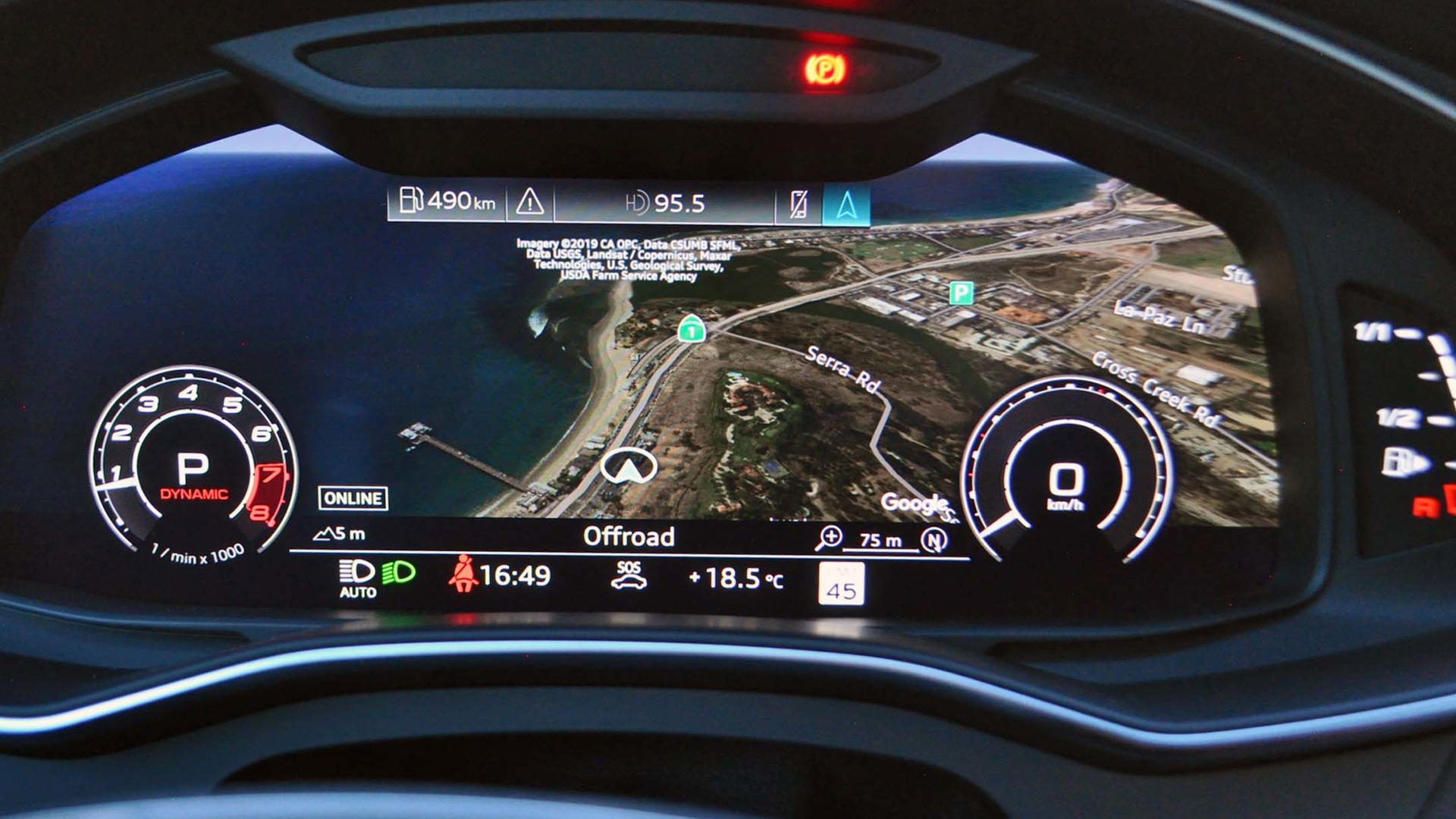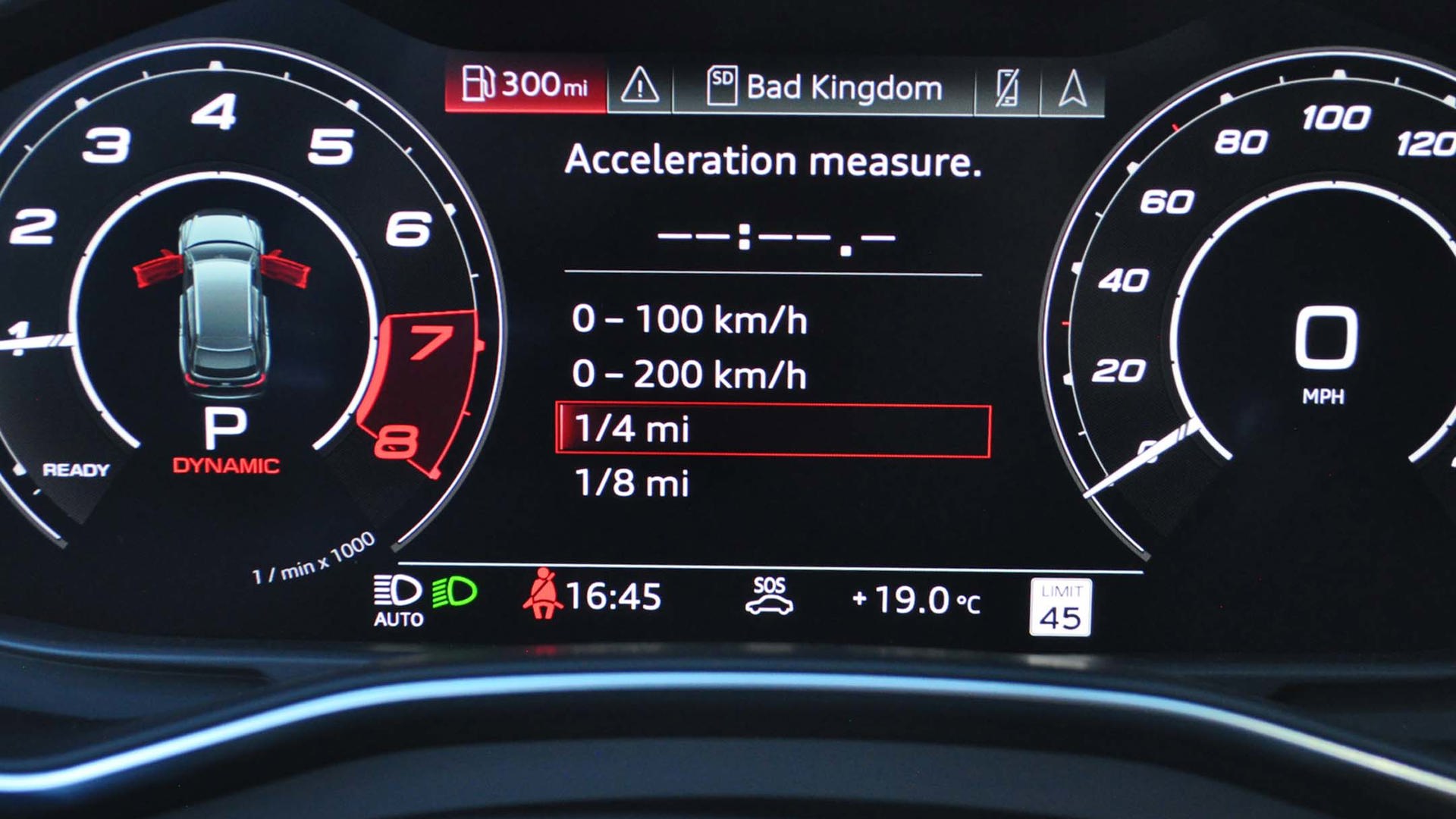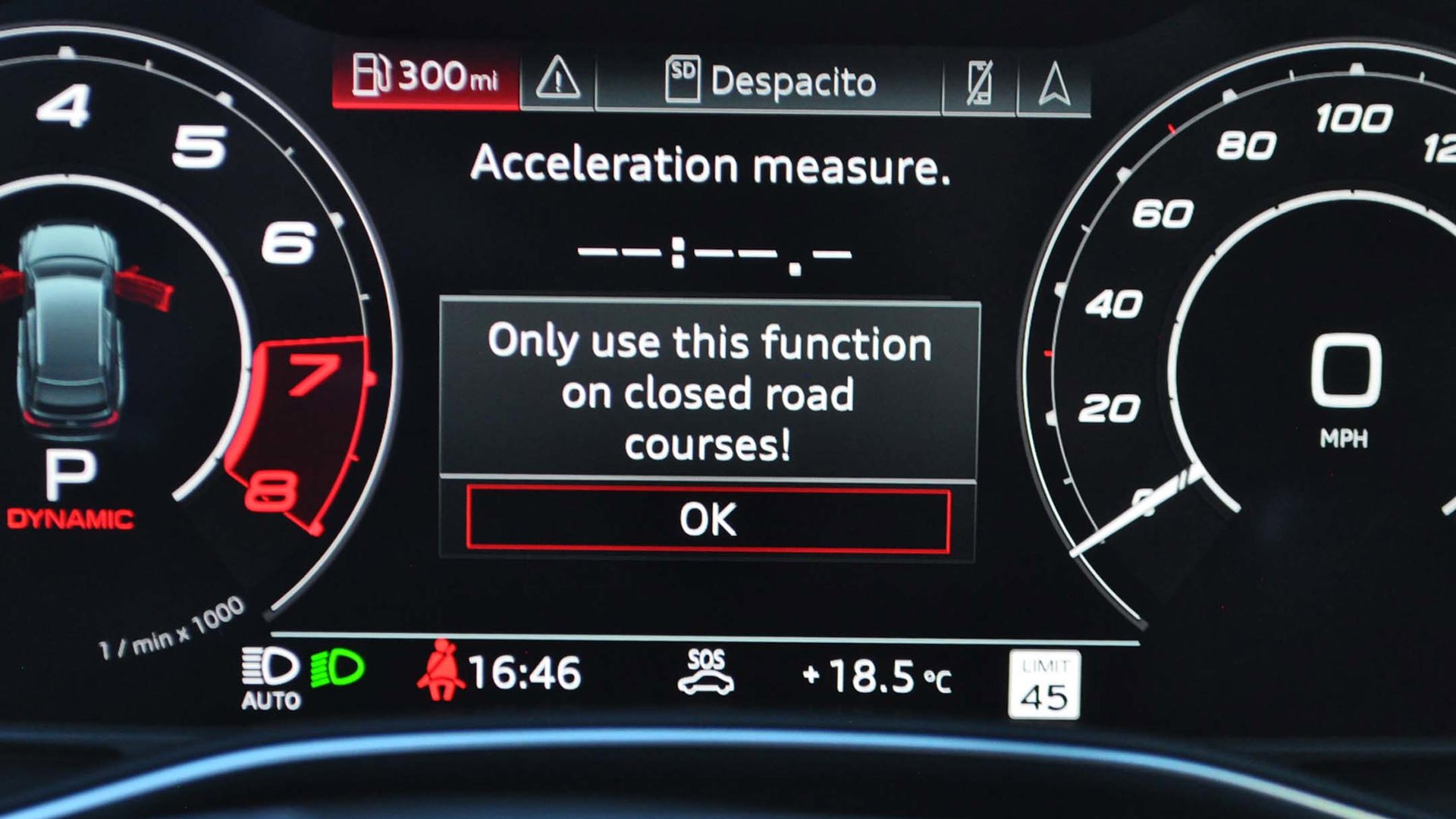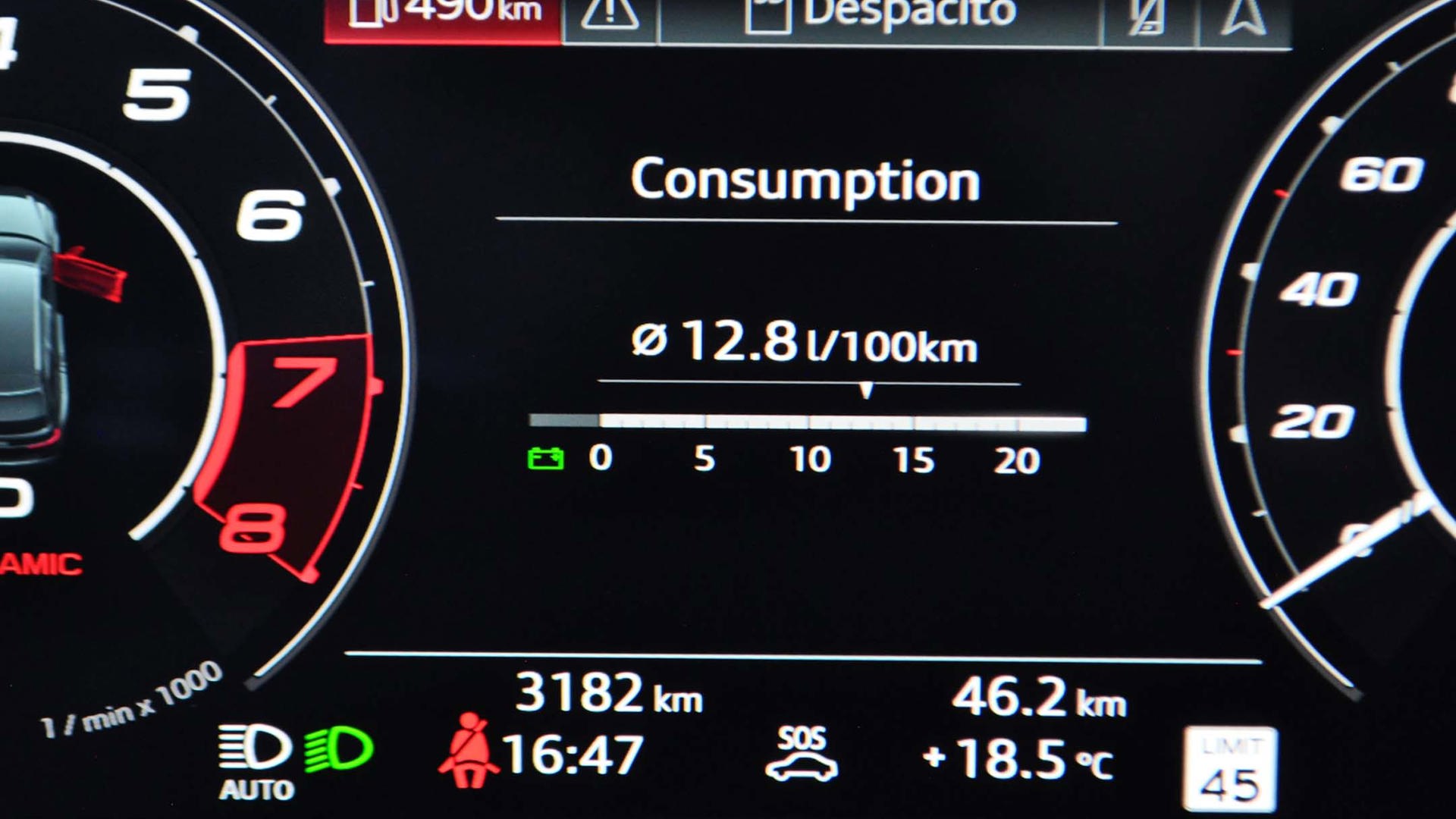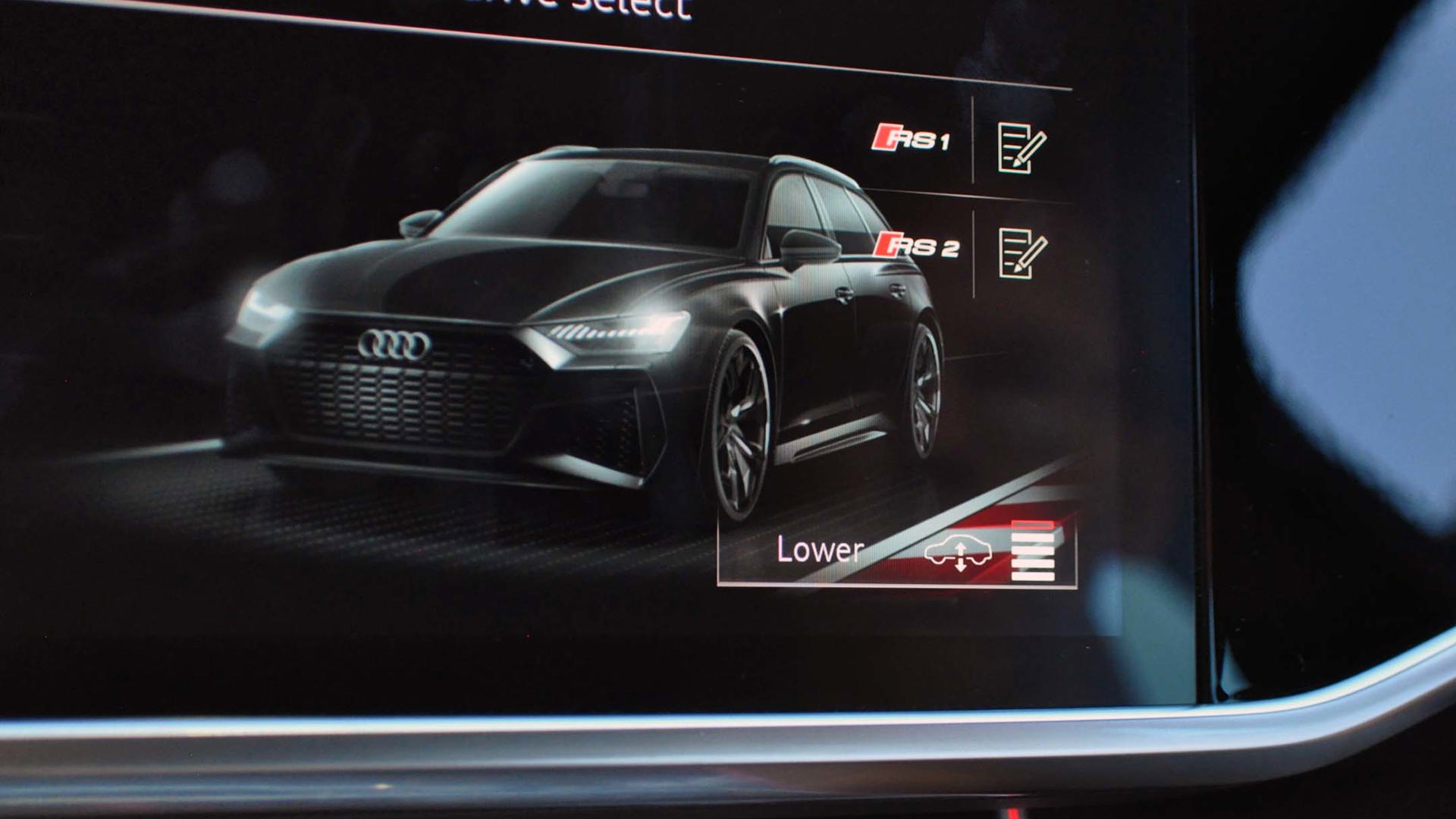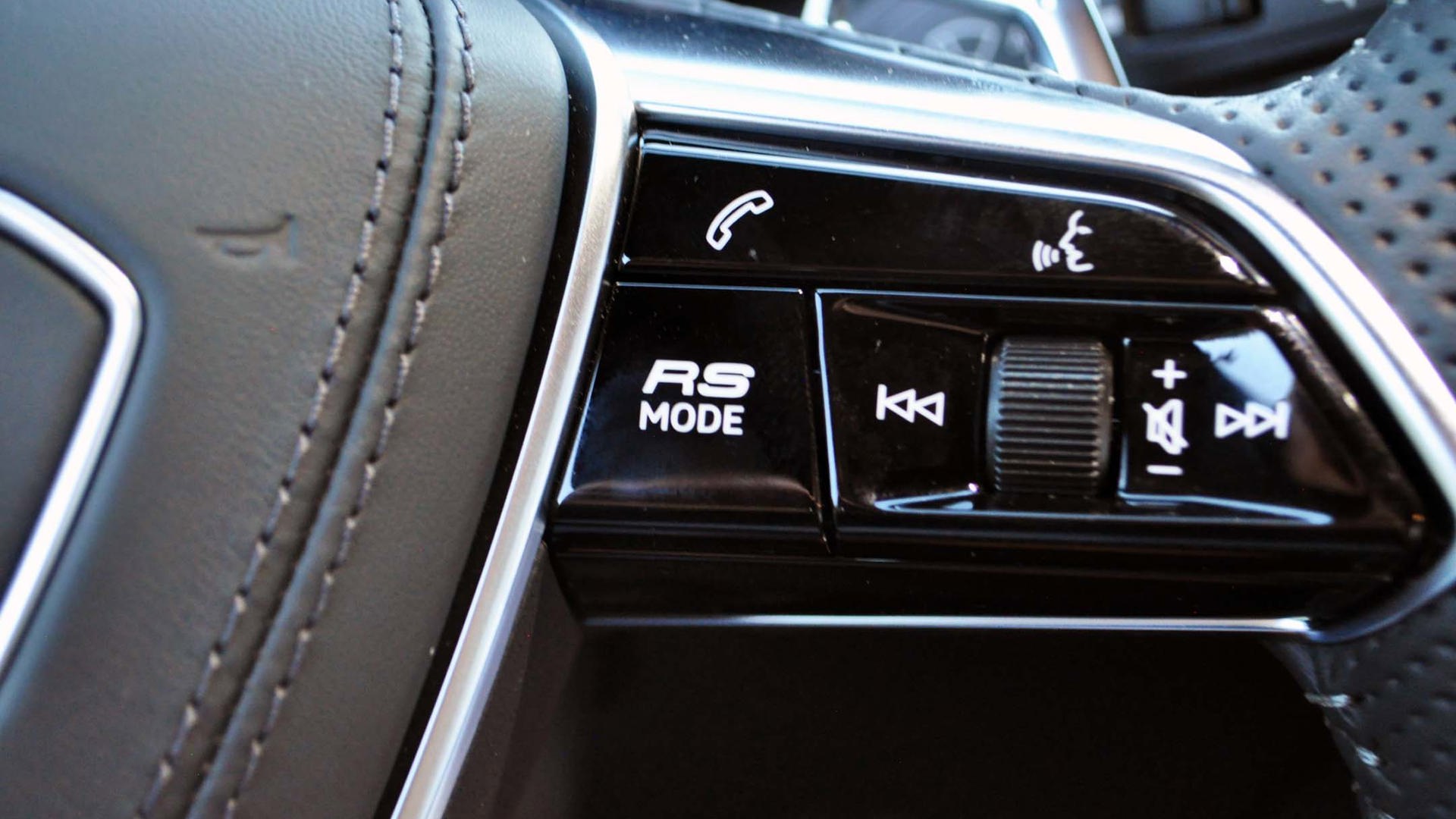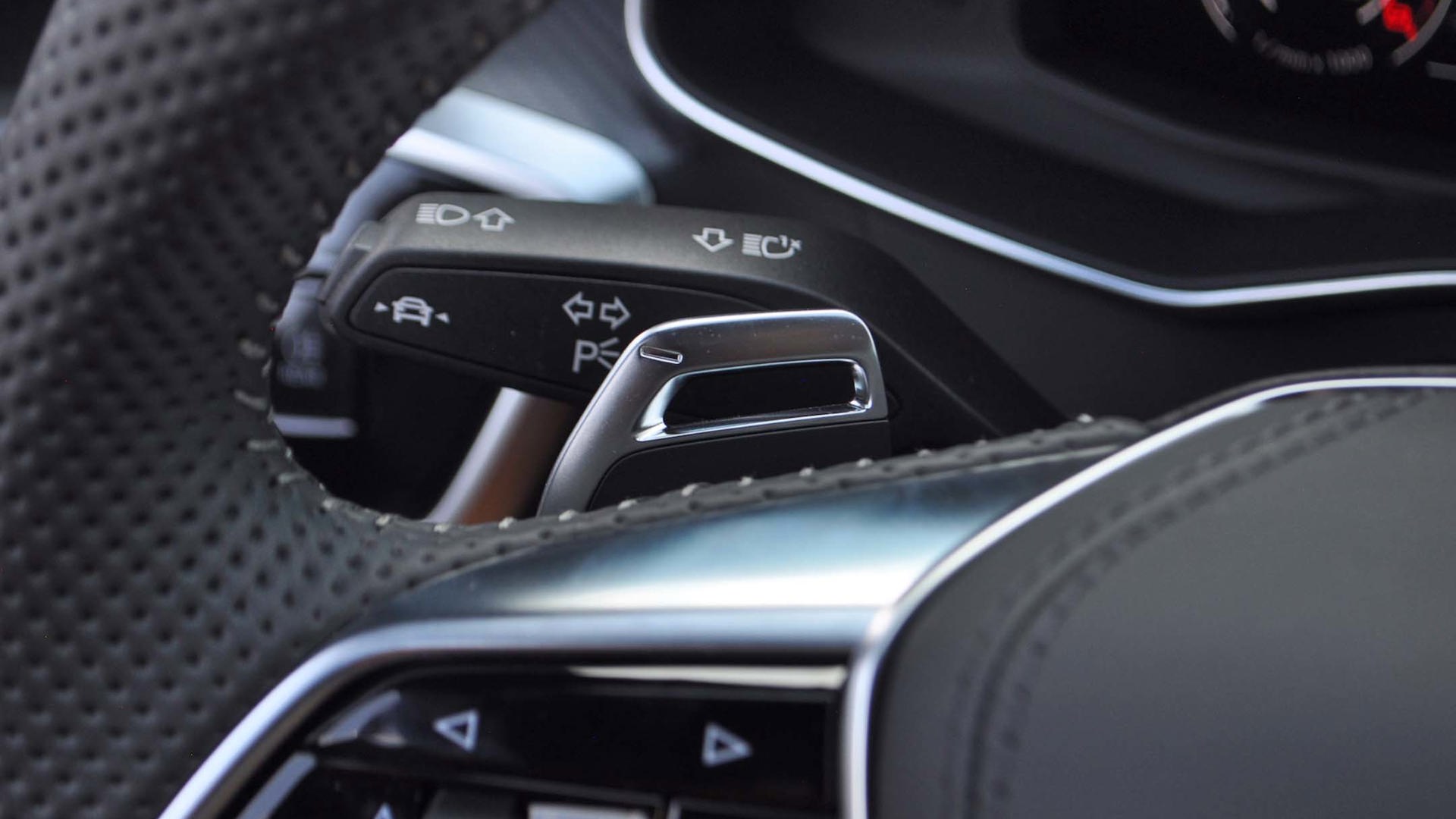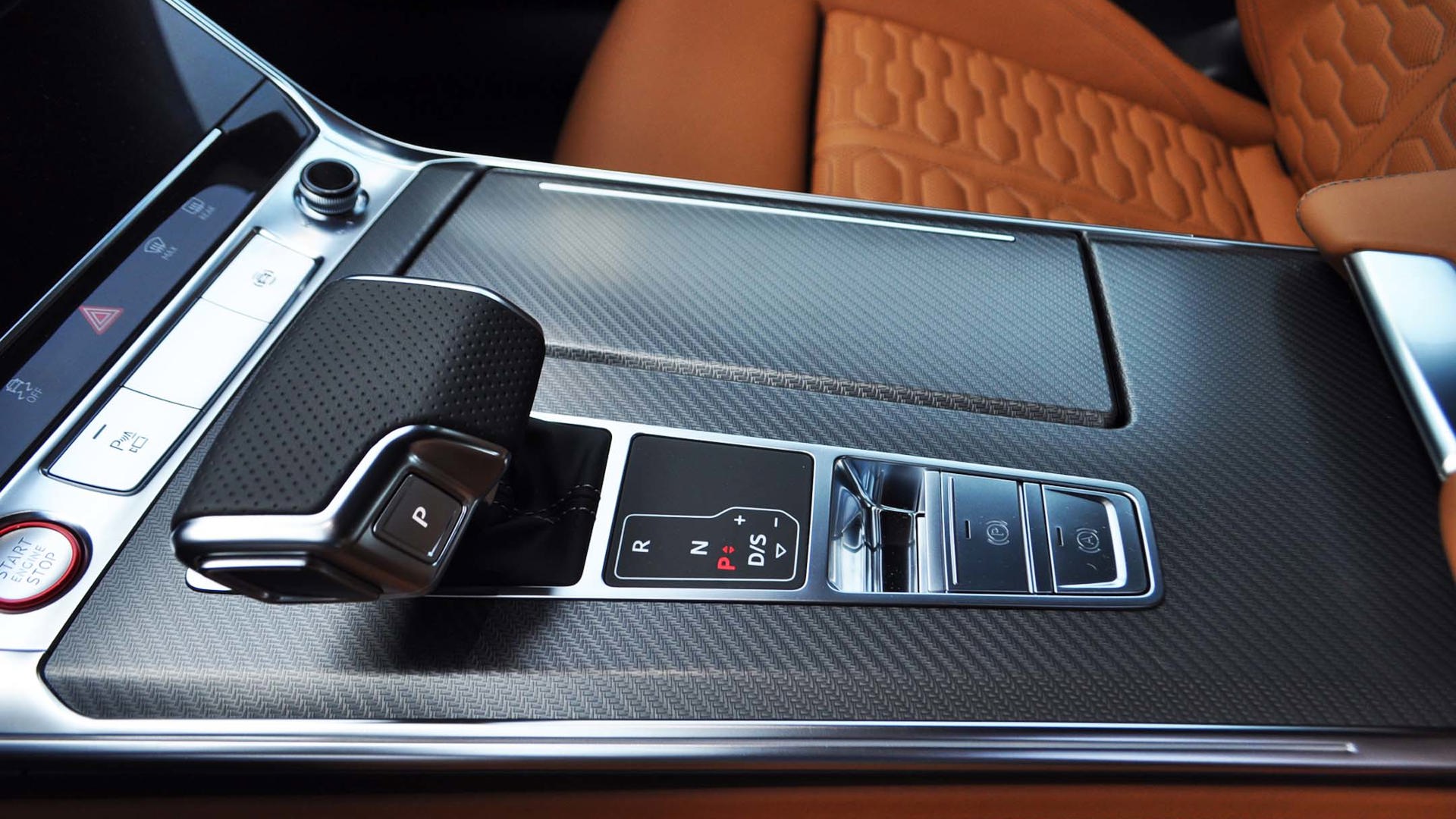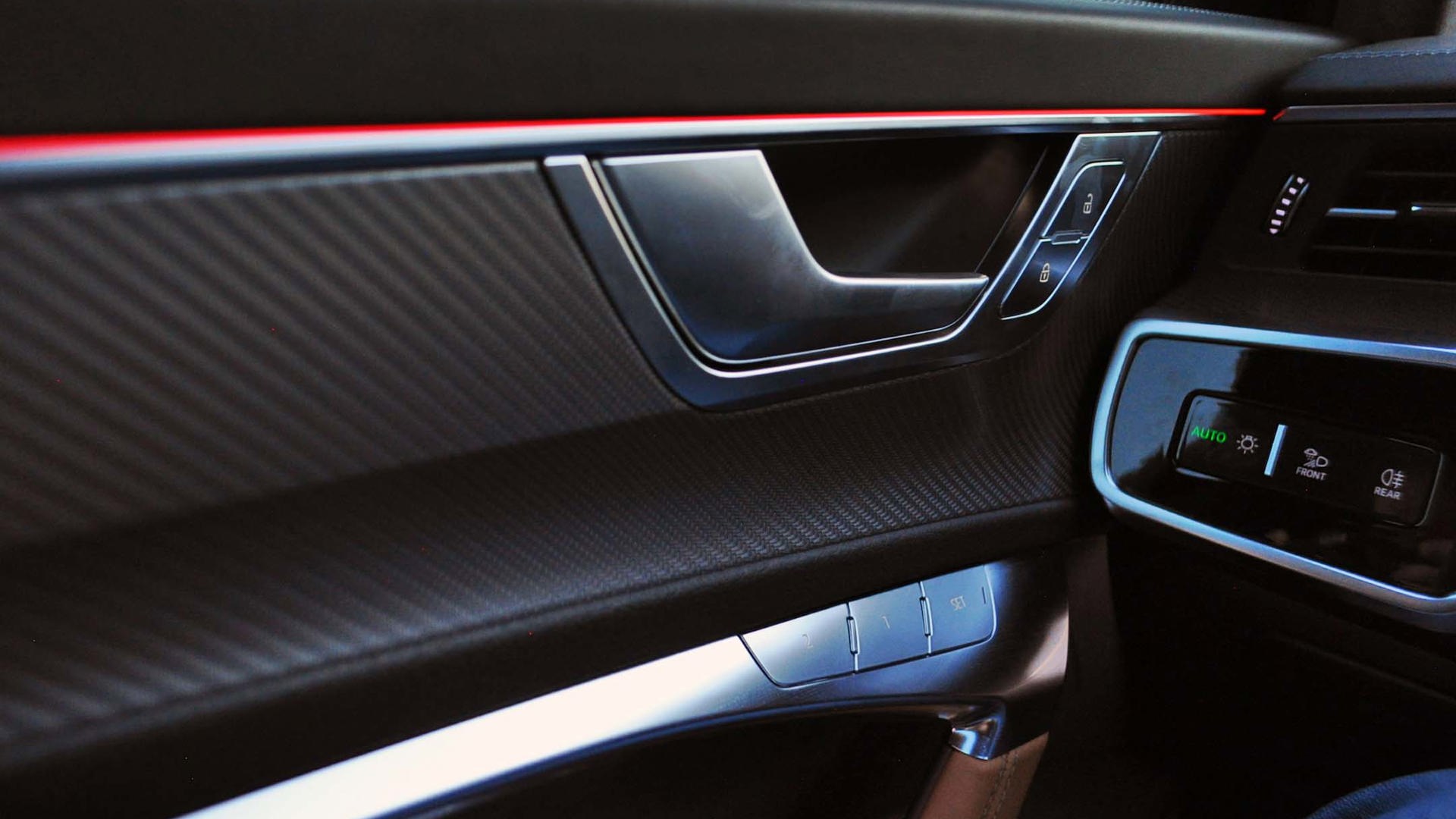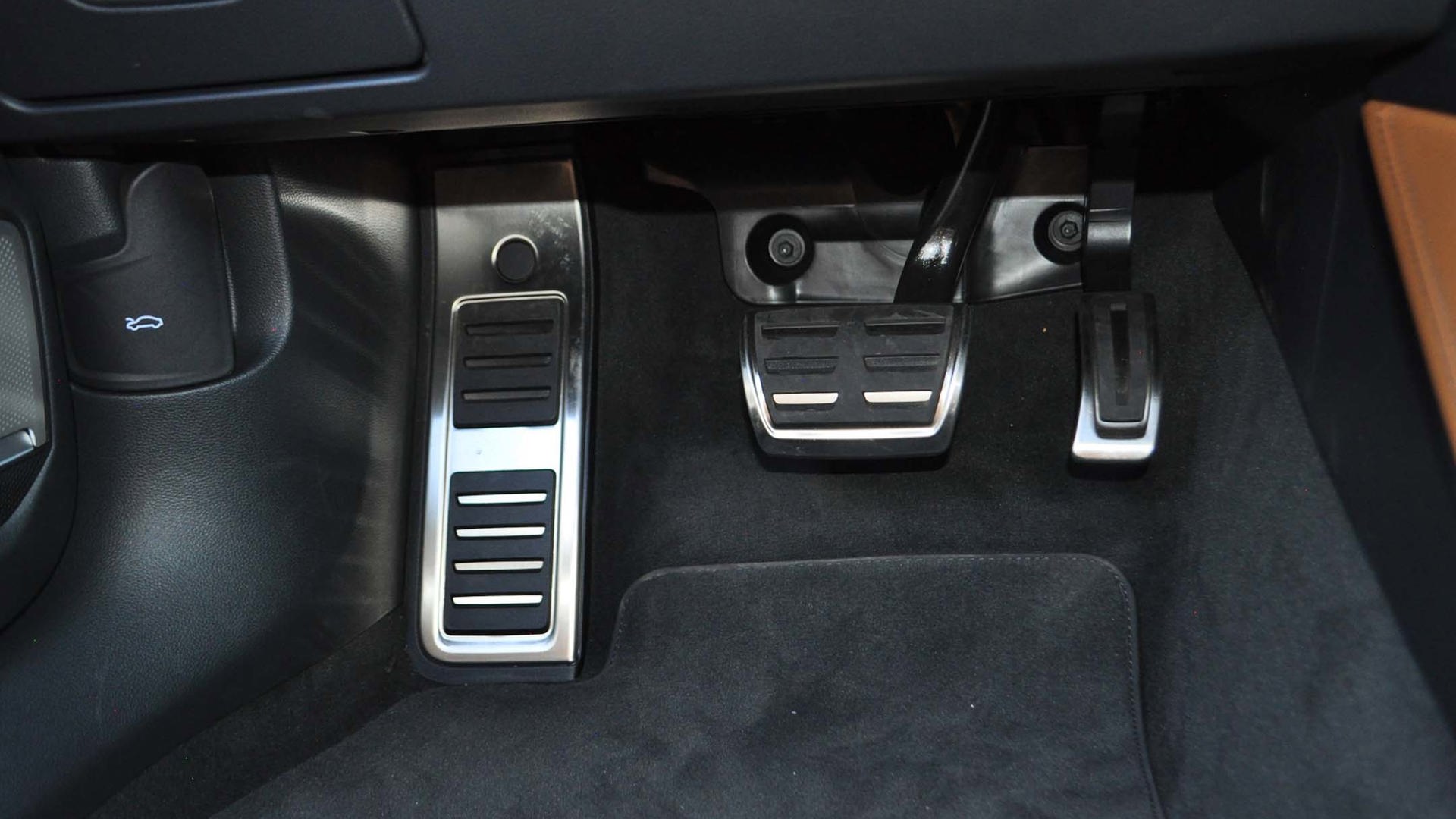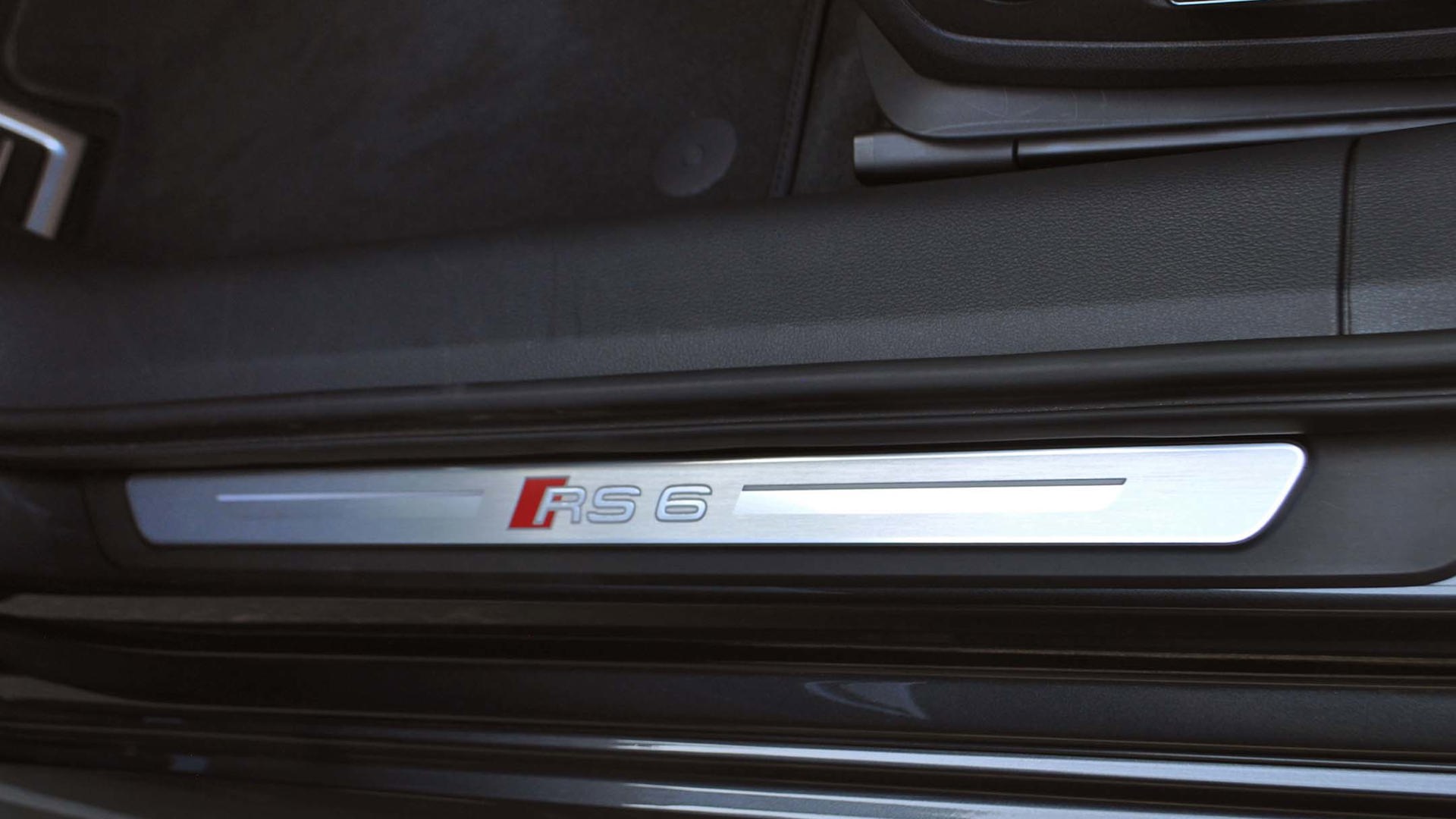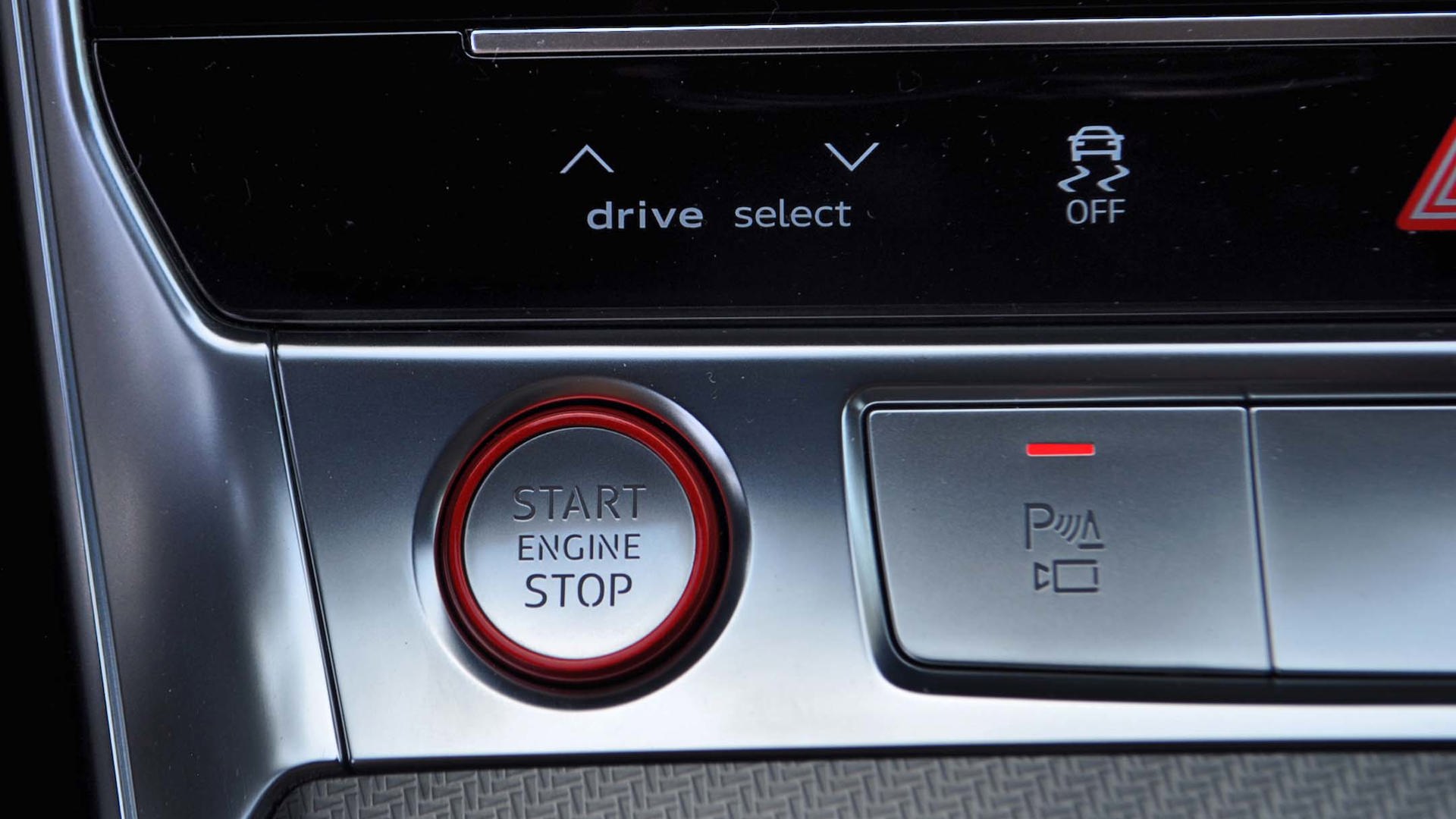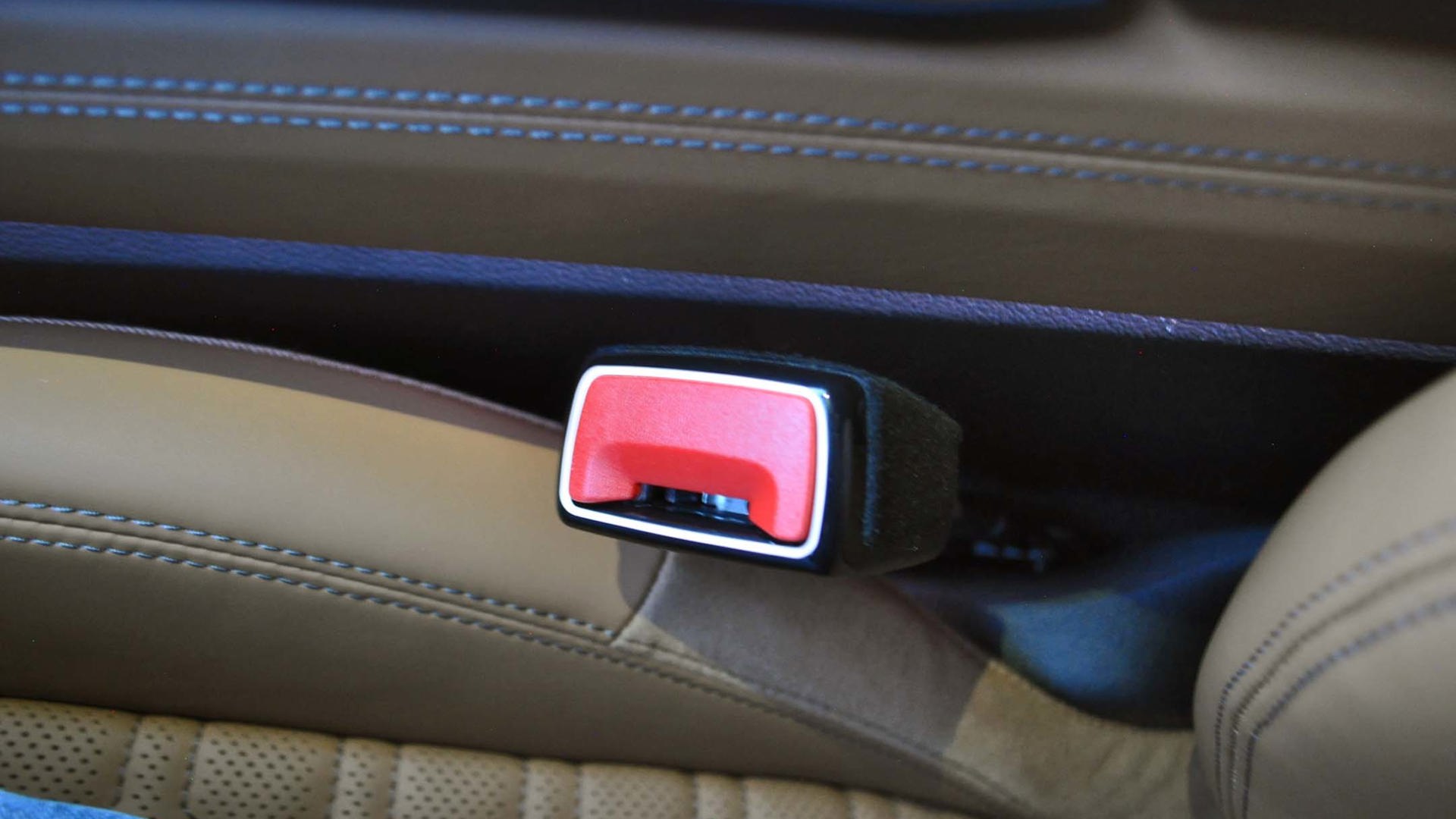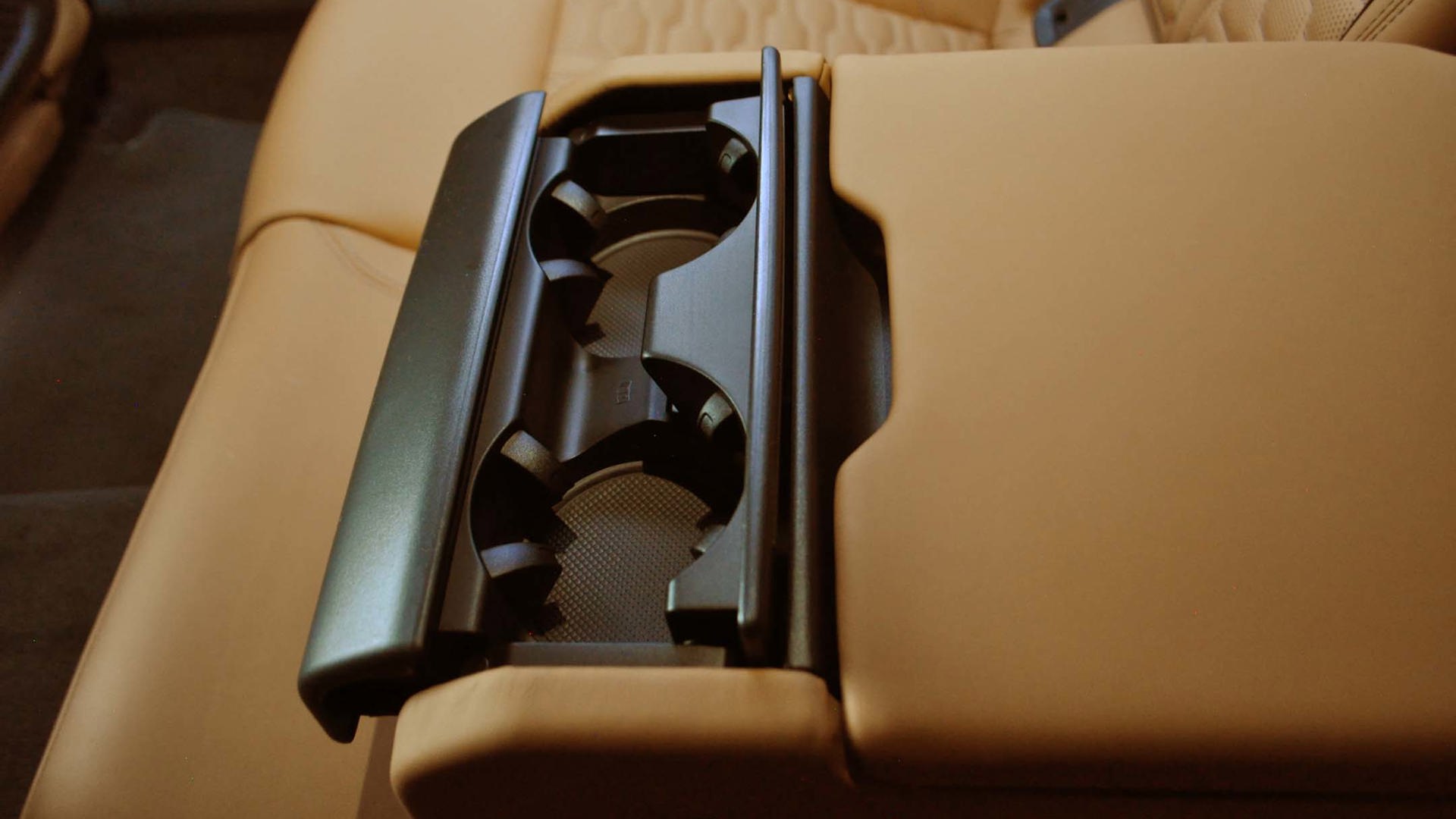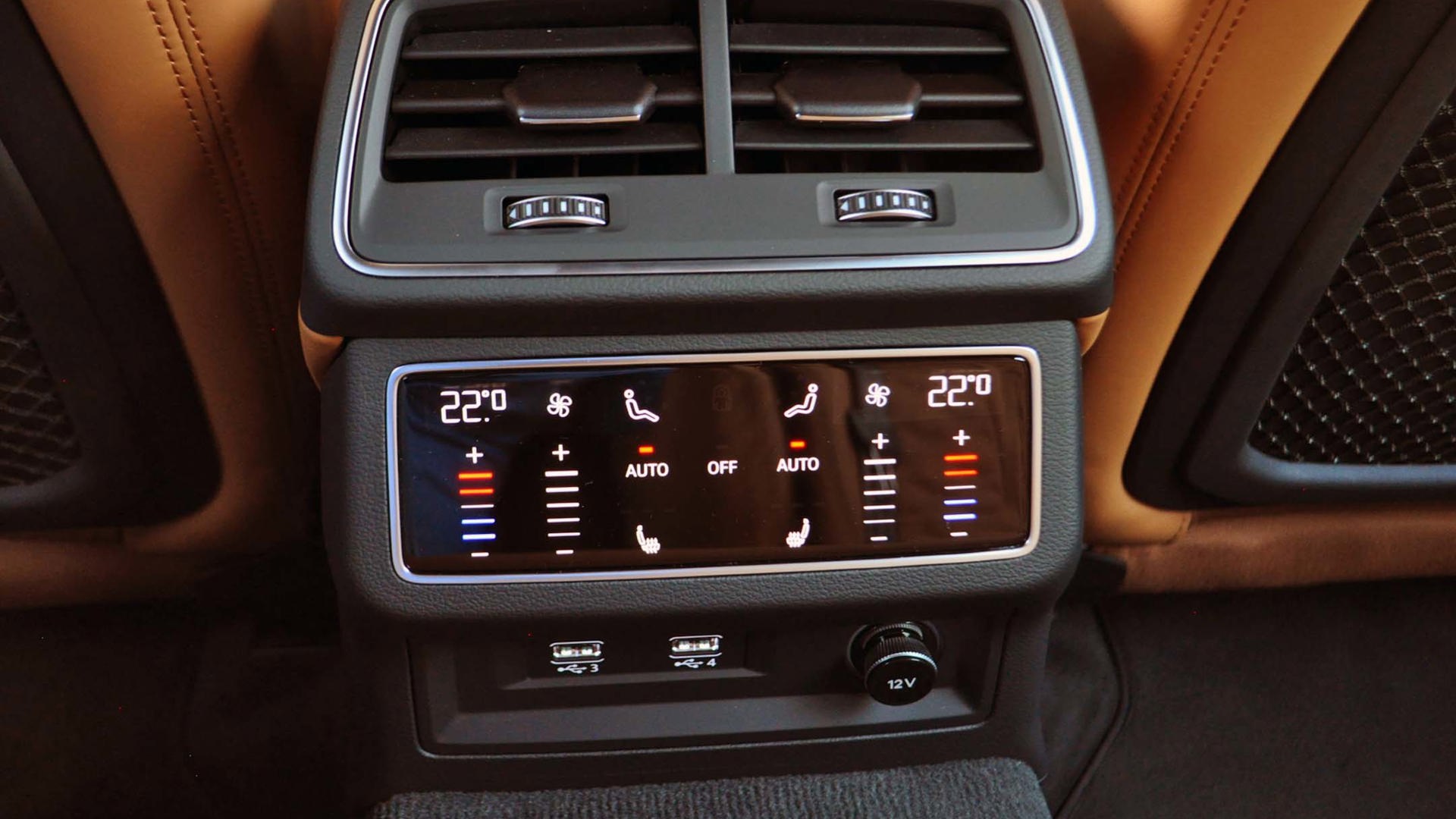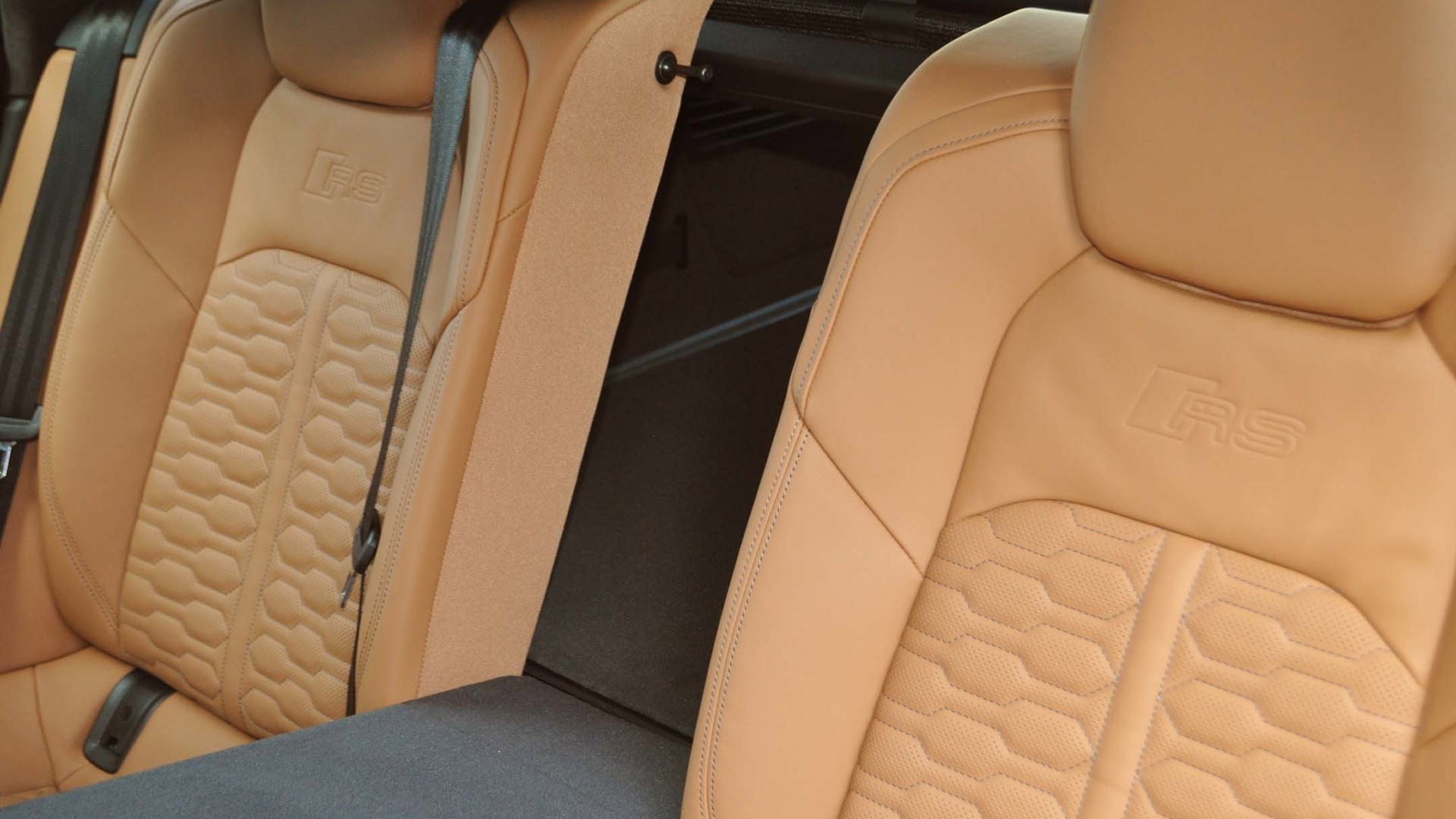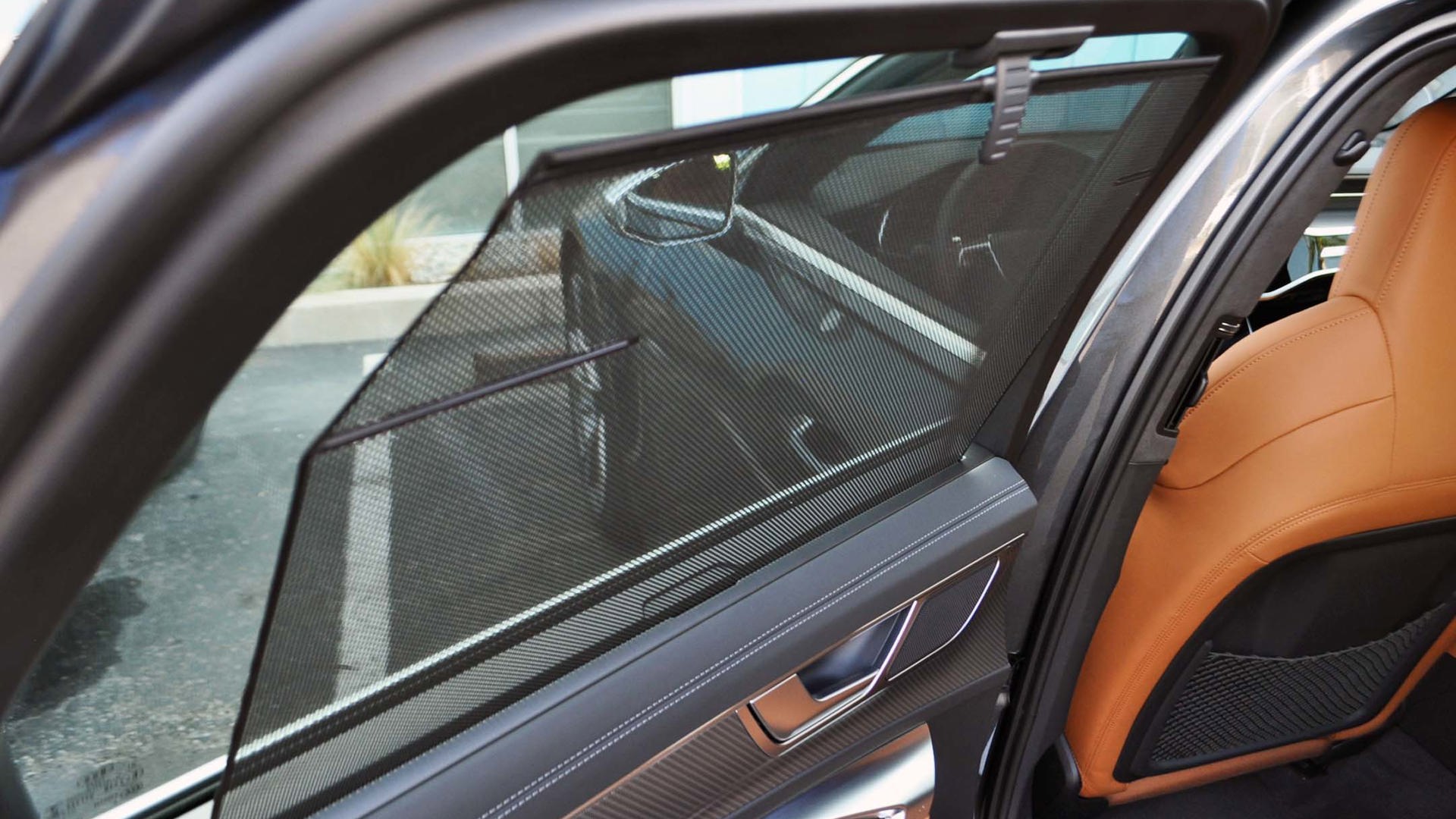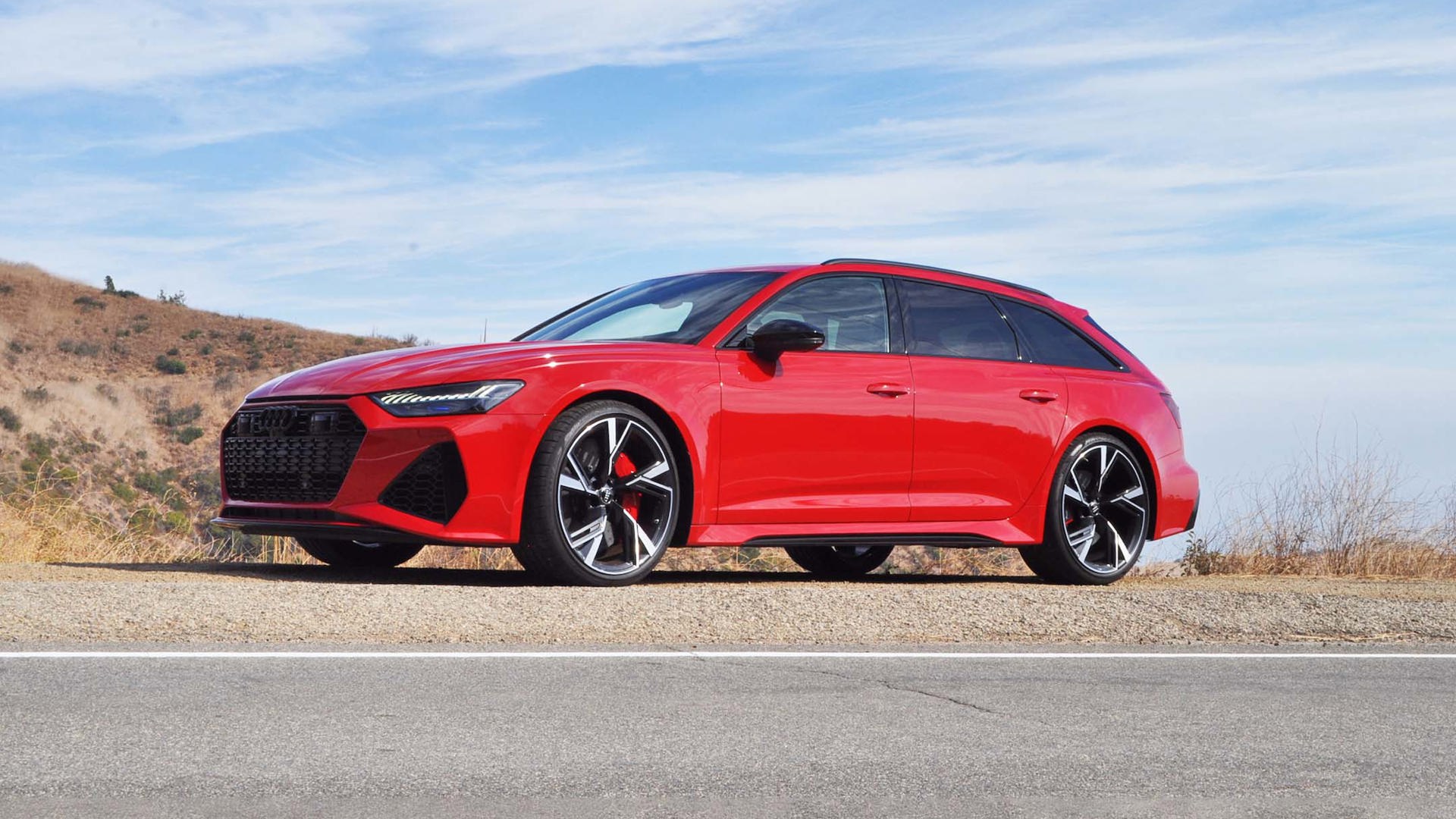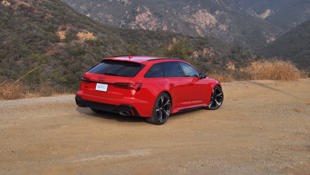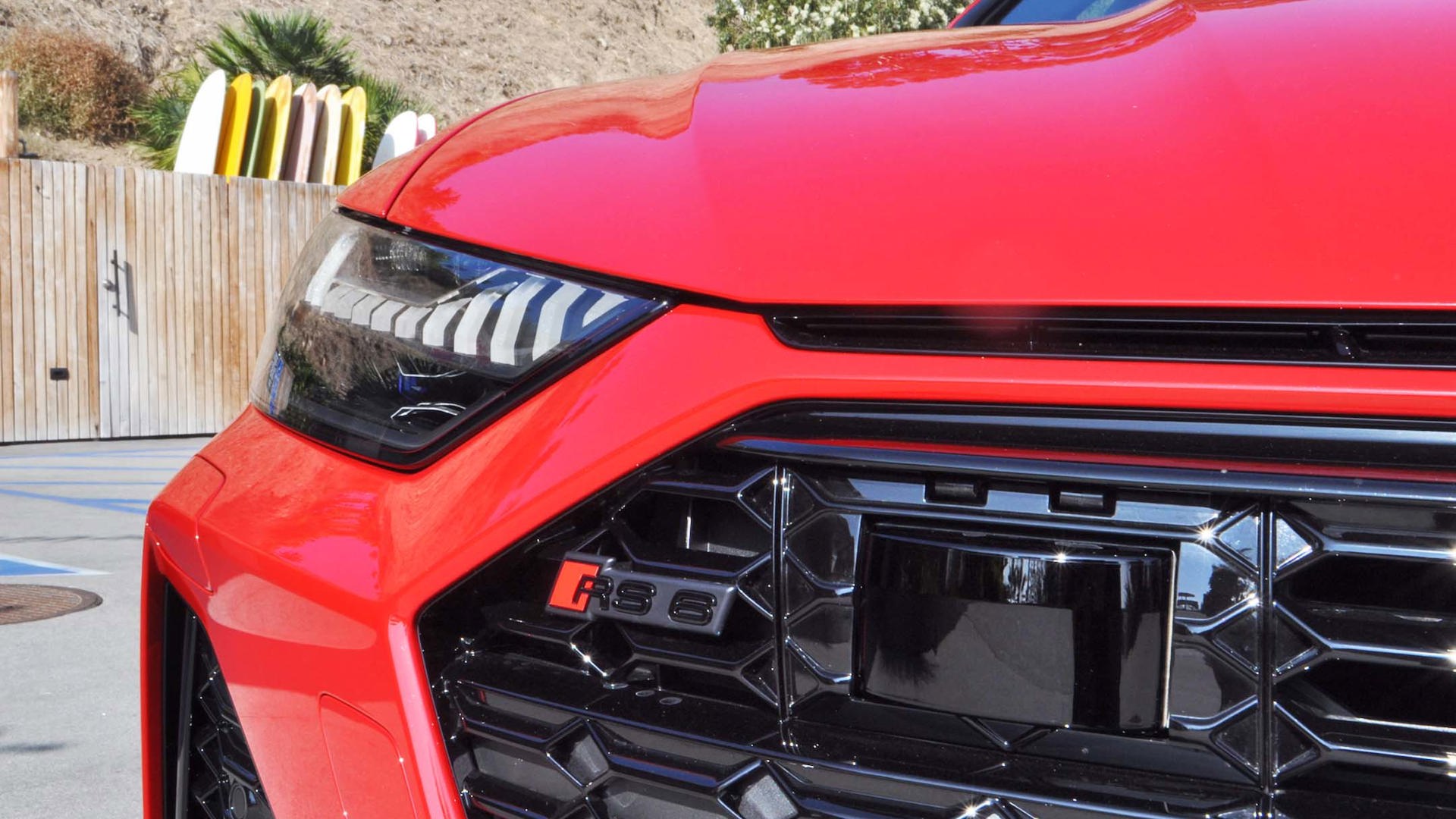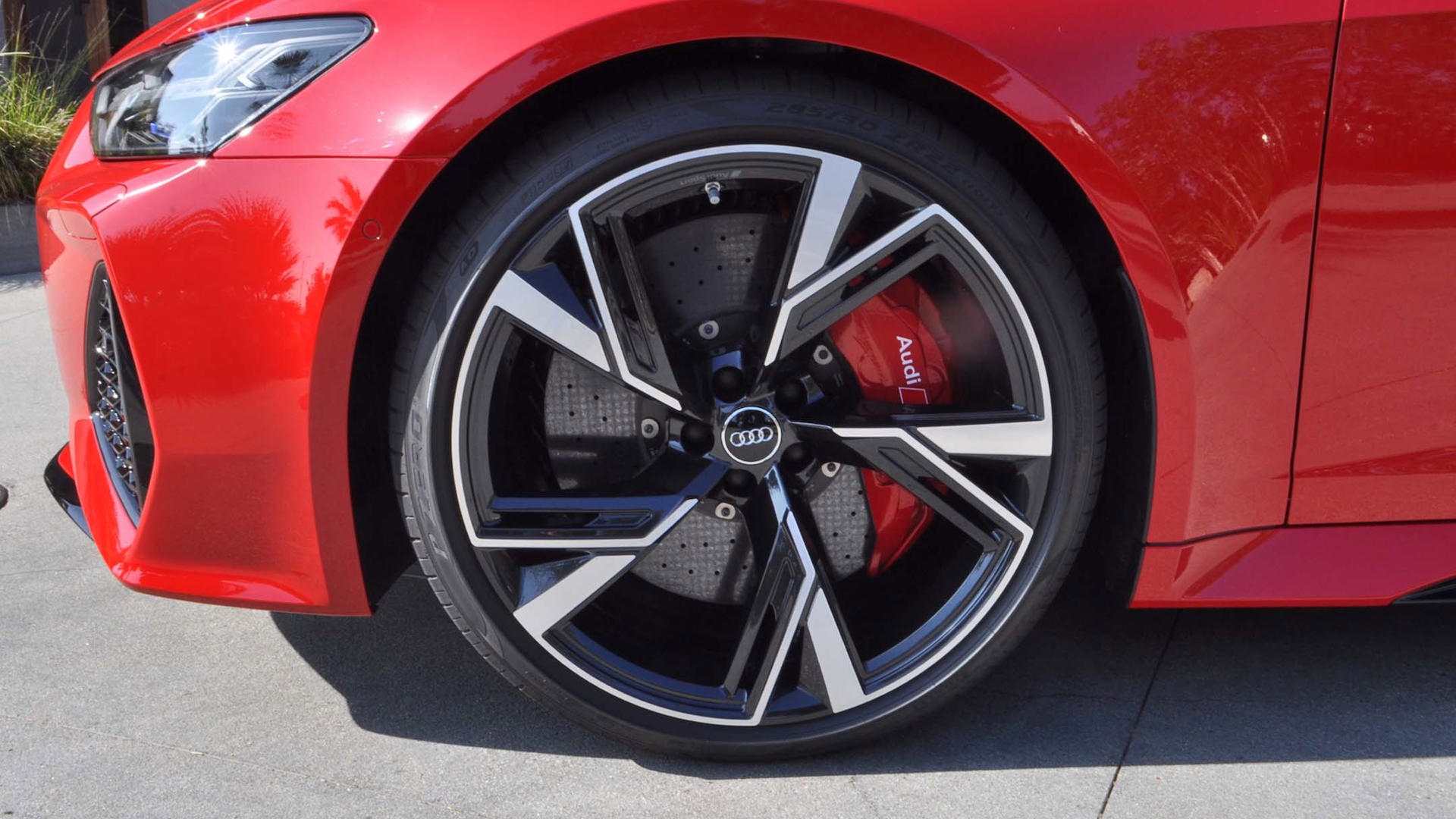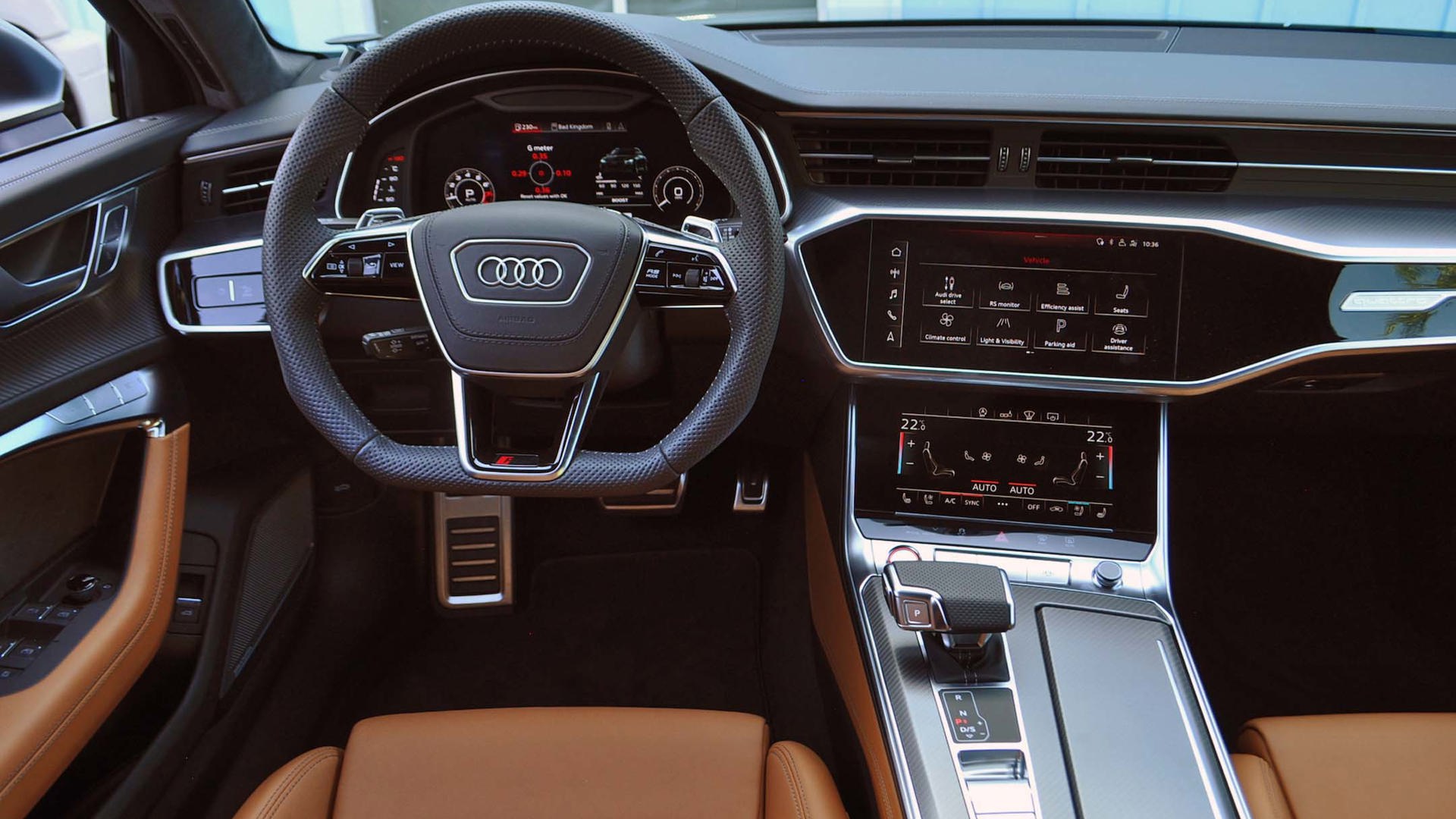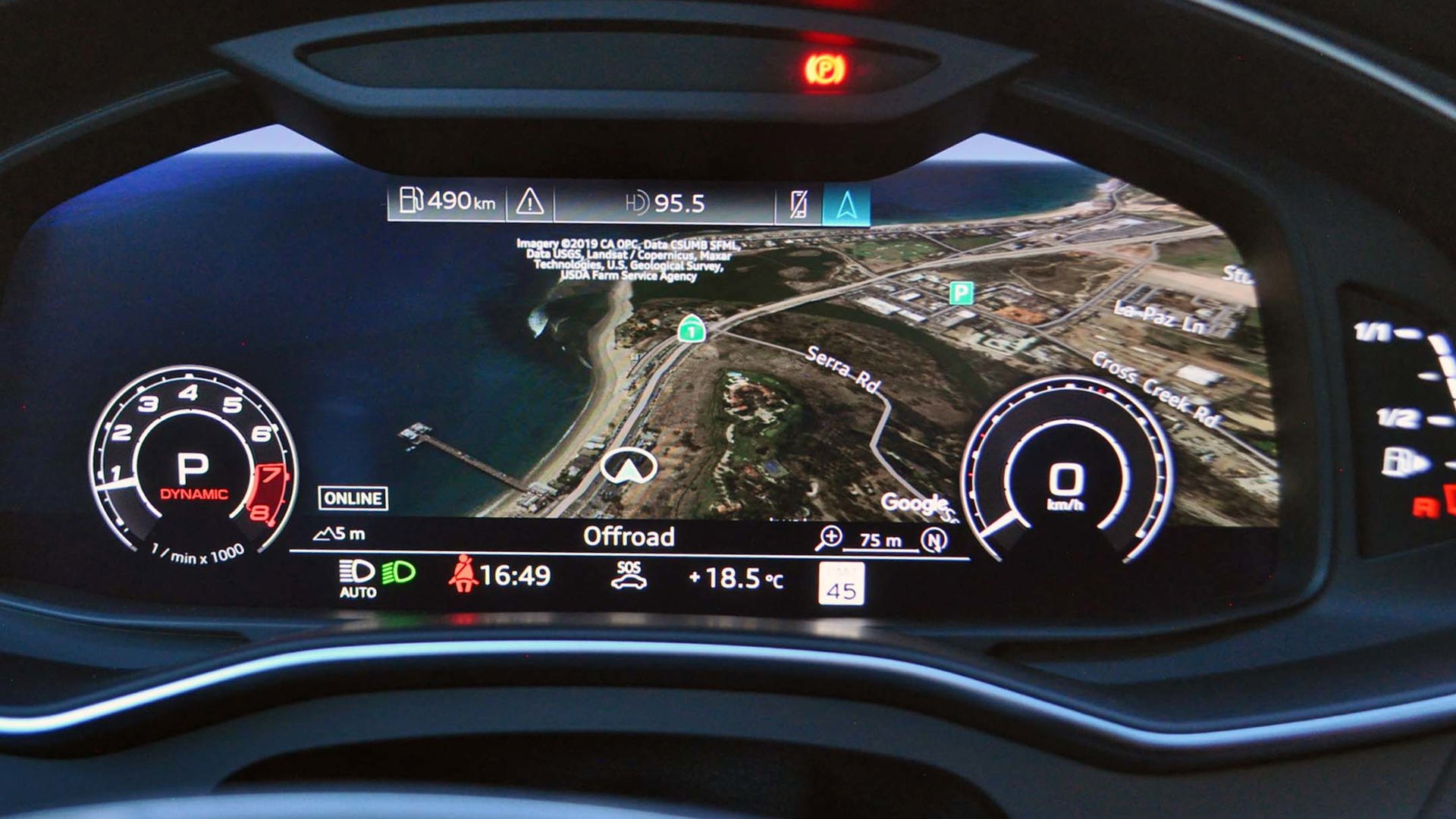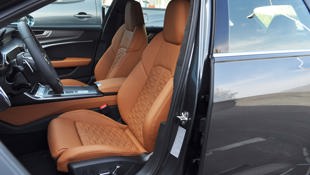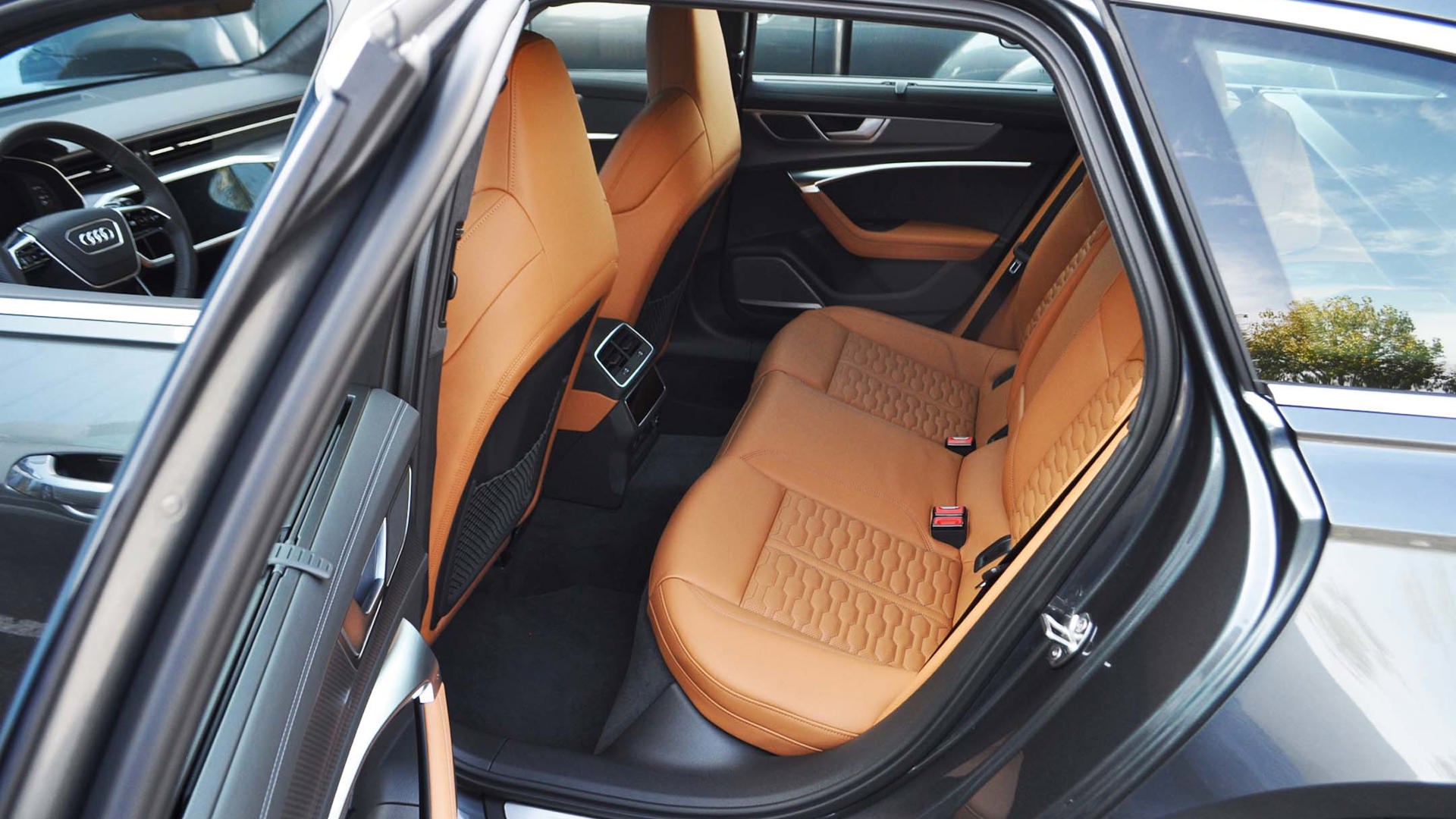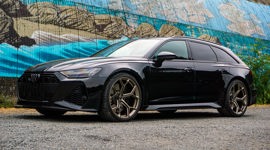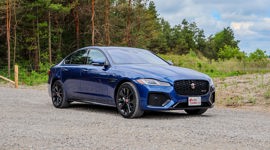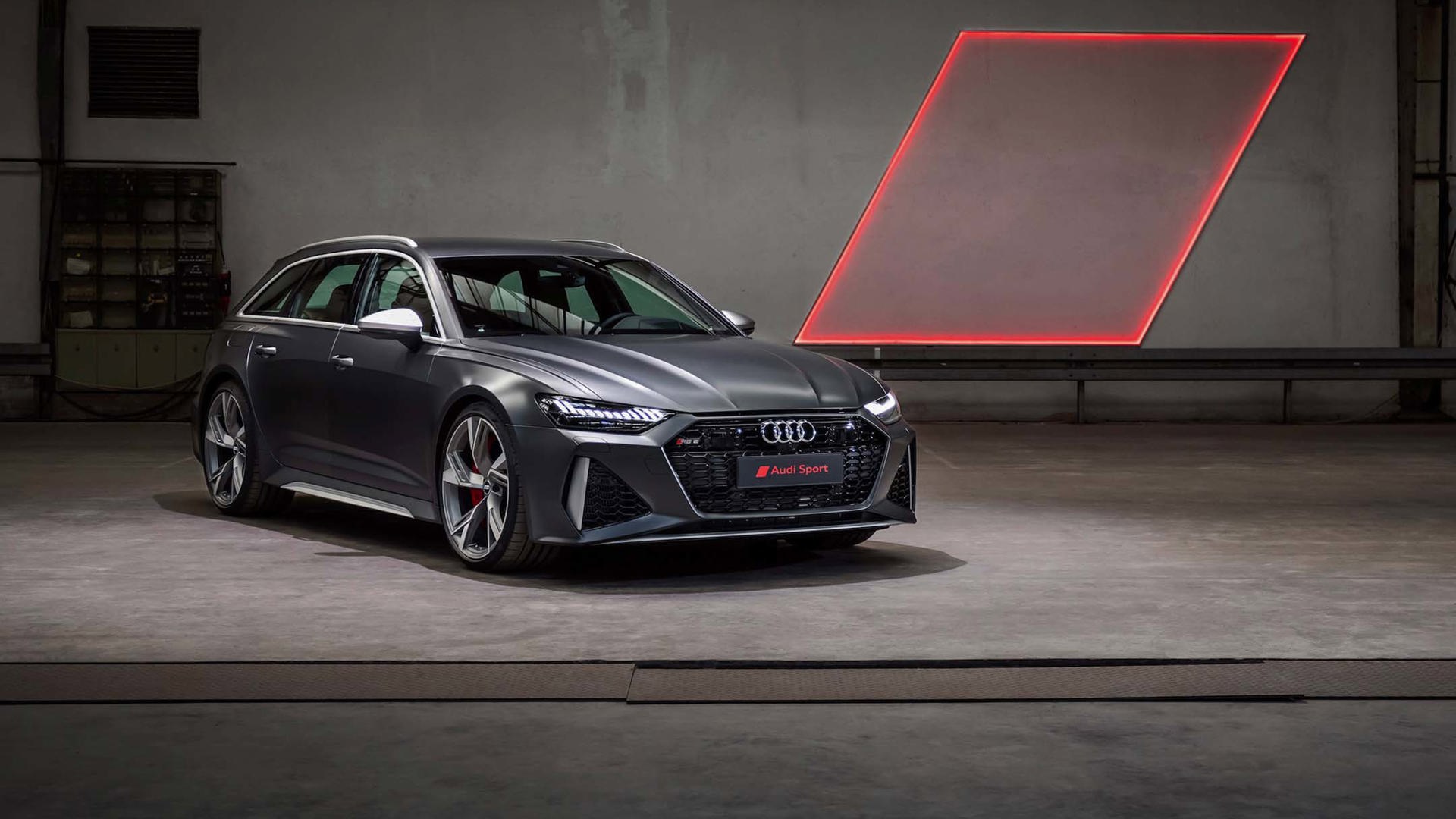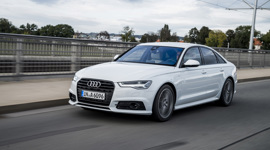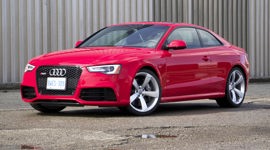 AutoTrader SCORE
AutoTrader SCORE
-
STYLING9/10
-
Safety8/10
-
PRACTICALITY9/10
-
USER-FRIENDLINESS8/10
-
FEATURES9/10
-
POWER9/10
-
COMFORT8/10
-
DRIVING FEEL9/10
-
FUEL ECONOMY6/10
-
VALUE7/10
MALIBU, CA – A chance encounter in Germany over 10 years ago to drive the Europe-only Audi RS 6 Avant power wagon had me smitten: it offered the practicality of an A6 wagon, the power of a Lamborghini-derived R8, with looks and handling nicely balanced between those two extremes. From then on, it was my answer when folks would ask what I’d pick, if I could have only one vehicle.
In truth, my choice wasn’t much use to most folks on this side of the pond, as Audi never brought any of the four previous generations of the RS 6 to North America – outside of (cruel) teaser display models. When it comes to monster performance luxury mid-size wagons, Mercedes-Benz practically has a monopoly on the entire, microscopically slim category. At least until next fall, when Audi plans to finally offer the RS 6 Avant in Canada.
Styling: 9/10
This fifth-generation RS 6 Avant will be a 2021 model by the time it arrives later in 2020, but it’s almost a rolling anachronism in its visual aggressiveness – a latter-day Dodge Magnum SRT8 monster wagon, but with performance-oriented torque-vectoring all-wheel drive and a Star Trek–worthy interior. Just looking at it, our inferno red tester screamed it was not to be messed with, its massive front air intakes seemingly stretched wide, along with the rest of the body, which it truly is, at a total of 80 mm wider than a regular A6, to help accommodate the flared fenders and wider 21s or optional 22-inch wheels.
“The stance for us is super important,” said RS 6 exterior designer Andreas Joachim Koglin, noting that those huge wheels help visually lower the body, which is the same height as a regular A6, shockingly. Only the doors, roof and tailgate are shared with the regular A6 wagon, which Canadians see in A6 Allroad format only.
There’s a sleek semblance of roof rails that Audi demonstrated could be used to actually mount a practical roof rack – for a surfboard, in this case – or a ski box, or a canoe. Yet there’s no doubt that even in more demure colours, the RS 6’s lower body cladding, imposing brakes peeking out from behind those giant wheels, mammoth dual exhausts, and the contrasting rear-view mirror housings give this wagon a pent up, ready-to-pounce look that belies its practicality-first body style.
Power: 9/10
With a twin-turbo V8 under the hood that produces 600 hp and a ridiculous 590 lb-ft of torque, this is one super wagon that will be able to make it on time to nearly any practice anywhere. With its standard all-wheel drive and launch control, Audi claims a zero to 100 km/h sprint takes 3.6 seconds, with a standard top speed of 250 km/h, though that can be boosted up by the optional Dynamic package (to 280 km/h) or Dynamic Plus (to 305 km/h), courtesy a progressively looser electronic software leash.
These figures shame pretty much any sports car under $200,000, especially when you consider the spacious practicality offered by the mid-size wagon body.
Driving Feel: 9/10
And yet… despite all the power and grip provided by the RS 6’s performance-oriented AWD drivetrain, there are instances where the RS 6 can be caught flat-footed. Like at a couple of stoplights, there was more than a little initial delay when we stomped on the pedal right with the green. Once was when the engine turned off in order to save fuel, which we totally appreciate in something this inherently thirsty. But another time, perhaps because we were in the default Auto mode, after a slight brake lift had reignited the engine, there still seemed to be some software and/or confusion with the eight-speed automatic transmission that led to a momentary pause – an unwelcome calm before a storm of acceleration.
While twisting through the canyons just outside LA in Dynamic mode, the RS 6 stayed planted and felt instantly responsive, with power and downshifts coming through as soon as the driver willed them. But every once in a while, usually when sampling the Comfort or Efficiency modes but sometimes in Auto as well, there would be a request for power that would take a beat too long, or a surprisingly pregnant pause on a shift that would have one reaching for Dynamic mode once again.
Features: 9/10
It was then that the new and separate RS button right on the steering wheel became so welcome. Audi’s Drive Select modes are not the most quickly accessible, eschewing the usual buttons or knobs near the shifter in favour of a flush-mounted arrow display at the base of the centre console just above the ignition button. Yes, the electronic shifter itself can be bumped down quickly from its normal drive position into a more responsive Sport mode, but what the unique RS button does is it allows you to program in and then quickly call up your preferred steering, throttle, suspension, shifter, and exhaust settings for two unique scenarios (say, for canyon carving twisties, and for the traffic-clogged commute home from work).
Hit the RS button once, and RS1 will show up on the screen, as well as a list of your preferred twisty road parameters. Hit RS again, and you’ll see RS2 show up, complete with your pre-programmed individualized preferences on dealing with traffic, which may or may not line up with Drive Select’s Comfort parameters.
Though Audi’s RS models truly do offer high performance, there’s still a significant margin of choice as to how hard-edged those dynamics should be served up to the driver – and perhaps more importantly, to passengers and family members.
Practicality: 9/10
As an all-wheel drive mid-size family wagon, perhaps the only area where the RS 6 Avant falls down in terms of practicality is where any wagon would compared to its likely market alternative: a higher-bodied crossover or SUV. It’s true that climbing into and out of vehicles with a higher seat is easier all around, especially for drivers regularly transporting older or less sprightly passengers. But with a roof height the same or just slightly lower than a regular A6 wagon (depending on suspension), if you’re talking cars, there are few more practical cars on the market than the RS 6.
The cargo area offers a healthy 565 litres of space, which can be extended by folding down the 40/20/40-split folding seats from the rear cargo area – the centre portion can be folded down independently for a handy ski or hockey stick passthrough. There’s plenty of room – and welcome separation, occasionally – for rear passengers on long trips.
User Friendliness: 8.5/10
To go along with SUV-worthy practicality, there are also welcome small touches in the RS 6 that benefit from its A6 family hauler lineage. This includes things such as lit seatbelt surrounds that help you click in at night with minimal fumbling around, sunshades for rear passengers, and two rear USB ports for charging. The tailgate can be opened by a sweep of the foot when your hands are full, plus there’s a powered tonneau cover that automatically folds down to cover your purchases once the tailgate closes.
Of course, performance is what the RS 6 buyer is after most – there are larger and less-pricey luxury wagons out there – so the dash displays can be reconfigured in a variety of ways to allow the driver to keep close tabs on various performance metrics. Whether the driver wants to see the tach front-and-centre, a g-force readout, 0–100 km/h times, or instant power and torque values, there are unique virtual cockpit modes that will provide that info.
Comfort: 8/10
The base air suspension is the more comfort-oriented option, with automatic levelling of the car no matter how it’s loaded; it can lower the RS 6 Avant by up to 10 mm above 120 km/h, or raise it by 20 mm, which came in handy multiple times on a steep driveway at our home-base hotel for this RS 6 international media launch. Towing is also much easier with this suspension, said RS 6 chassis engineer Roland Waschkau, with its total suspension height range of 30 mm.
Waschkau said that all RS 6 models around the world offer equal suspension setups; and globally, about 60 percent of drivers go for the optional Dynamic Ride Control suspension, which provides a firmer ride but more performance-oriented suspension settings.
Safety: 8.5/10
It’s all about active safety in the RS 6, with enough power, brakes, and quick enough steering to get you out of any dangerous spot quickly. Of course, there are also a plethora of electronic safety aids in this top-line car, numbering over 30 “assist systems” according to Audi, including adaptive cruise assist, intersection assist, lane-change warning, curb warning, and 360-degree cameras.
Fuel Economy: 6/10
This is the one area where even through-and-through RS 6 fans will have a hard time defending their beloved, low-volume performance wagon – which does have quite a few fuel-saving features, such as a mild-hybrid 48-volt system that helps with the automatic stop-start system. But at an overall official fuel consumption rating of 11.7 using WLTP numbers, and an observed 12.8 L/100 km average after a long stint behind the wheel, its thirst for premium fuel is a good argument for Audi to go further on the electrification front, and provide it a larger battery and some plug-in capability to ease its thirst for premium fuel – and perhaps at the same time provide a power boost over its E 63 AMG nemesis.
Value: 7/10
It’s difficult to give an accurate score for value before Audi Canada announces its official RS 6 pricing. The European version of the RS 6 starts at €117,500 (roughly $172,000 at time of writing), though vehicle pricing is rarely equivalent between Europe and Canada; its closest market rival from Mercedes-AMG starts at just under $120,000 and we would expect pricing to be competitive. The RS 6 is a super-expensive mid-size luxury wagon, yes, though it should hold its own in value compared to the E 63 S, and a host of taller, less-dynamic go-fast luxury SUVs.
The Verdict
After 25 years of watching the Audi RS 6 Avant charm other markets, its arrival in North America provides a sweet, sweet taste of forbidden automotive fruit. Its heavy fuel consumption and occasionally delayed dynamic responses, however, also seem a tad old-school as we head into 2020, making me wonder if its arrival to Canada was unfortunately a generation or two too late to truly capitalize on its do-it-all-if-pricey brilliance, its strange yet fascinating juxtaposition of so much power in such a family-friendly package.
| Engine Displacement | 4.0L |
|---|---|
| Engine Cylinders | V8 |
| Peak Horsepower | 600 hp @ 6,000 rpm |
| Peak Torque | 590 lb-ft @ 2,050–4,500 rpm |
| Fuel Economy | 16.3/9.17/11.7 L/100 km cty/hwy/cmb |
| Cargo Space | 565 / 1,680 L seats down |
| Model Tested | 2021 Audi RS 6 Avant |
| Base Price | n/a |
| A/C Tax | $100 |
| Destination Fee | $2,095 |
| Price as Tested | n/a |
|
Optional Equipment
n/a
|
|
